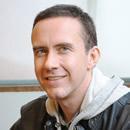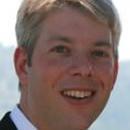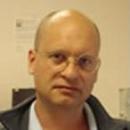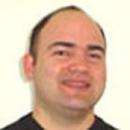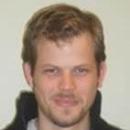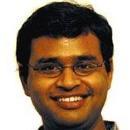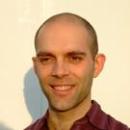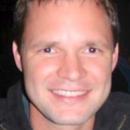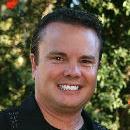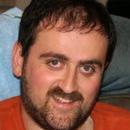SpringOne 2GX 2011
Chicago, October 25-28, 2011
Session Descriptions
Craig Walls - Author of Spring in Action
Developing Social-Ready Web Applications
Businesses are increasingly recognizing the value of connecting with their customers on a more personal level. Companies can utilize social networking to transition from "Big Faceless Corporation" to "Friend" by taking their wares to the online communities where their customers are. In this age of social media, those communities are found at social network sites such as Facebook, Twitter, and LinkedIn. In this session, you'll learn how to build applications that interact with the various social networks. We'll also look at Spring Social, a new feature in the Spring portfolio that enables integration with social networks in Spring-based applications.
Venkat Subramaniam - Founder of Agile Developer, Inc.
Functional Programming in Groovy
Functional programming style is gaining popularity. Though Groovy is not a functional programming language, writing in functional style is common and idiomatic in Groovy. While you have used these features in Groovy, learning the tents of functional programming will help you recognized these and make better use of them in the future.
Improving your Groovy Code Quality
Groovy is concise and expressive. However, writing good quality code takes effort and discipline.
Transforming to Groovy
Groovy is a elegant, dynamic, agile, OO language. I like to program in Groovy because it is fun and the code is concise and highly expressive. Writing code in a language is hardly about using its syntax, however. It is about using the right idioms. Come to this section to pick up some nice Groovy idioms.
Prerequisite: Some knowledge of Groovy is helpful but not required.
Unit and Functional Testing using Groovy
The concise, expressive syntax of Groovy and the ability to create internal DSLs make Groovy a great language for testing related tools. I
Matt Stine - Technical Architect, AutoZone
Building SOFEA's with Grails and YUI
The Service-Oriented Front-End Architecture (SOFEA) was first described in an article posted to The Server Side in late 2007. In that article, Ganesh Prasad, Rajat Taneja and Vikrant Todankar introduced a new architectural style for building web applications. Since that time numerous frameworks have begun to facilitate building applications in this style. This talk will focus on the combination of Grails and the Yahoo! User Interface Library for building SOFEA applications.
Brian Sletten - Forward Leaning Software Engineer
Groovy + The Semantic Web
The Semantic Web is Tim Berners-Lee's full vision of what the Web can and will be. This HTML stuff we are all so enamored with is just the tip of the iceberg. "Web 2.0" is a kindergarten plaything (and a stupid name). Webs of linked data will allow us unprecedented flexibility in how we produce and consume information. While many people have been waiting on the sideline for the Semantic Web to get here, others have been making it happen.
Metaprogramming the Microkernel: Groovy + NetKernel
Most organizations have a pretty conservative attitude toward adopting technology. If you are allowed to use a language like Groovy, chances are it is still going to be deployed in a conventional container like Tomcat or some other J2EE infrastructure.
What would happen if you took the power of a language like Groovy and married it to a next-generation environment like NetKernel? Imagine combining the power of Groovy metaprogramming with a microkernel-based resource-oriented environment. Expressive, powerful, scalable. It's pretty much guaranteed to rip a hole in the space time continuum. Come watch it happen.
You will be amazed at how much can be accomplished with so little code (not to mention how well it will perform).
Ken Sipe - Architect, Web Security Expert
Gradle - A Better Way To Build
Gradle allows you to describe your build using a rich, easily extendable build language based on Groovy. It provides compelling solutions for many of the big pain points that exist with current build systems. This session will be mostly driven by live demos. You will see how easy and elegant Gradle enables you to solve a broad range of requirements - over the full life cycle of typical and atypical Java builds.
Gradle in the Enterprise
The project automation requirements of complex enterprise builds are the true stress test for any build system. Gradle has a special focus on enterprise builds. In this session we will talk about and demo on: Multi-project builds, incremental builds, parallel testing, dependency management and concluding with organizing build logic, custom plugins and custom tasks.
Prerequisite: Introduction to Gradle
Jeff Brown - Core Member of the Grails Development Team
Compile Time and Runtime Metaprogramming With Groovy
The dynamic nature of Groovy makes it a fantastic language for building dynamic applications for the Java Platform. The metaprogramming capabilities offered by the language provide everything that an application development team needs to build systems that are far more capable than their all Java counterparts. Taking advantage of Groovy's metaprogramming capabilities brings great new possibilities that would be very difficult or just plain impossible to write with Java alone. Building Domain Specific Languages in Groovy is easy to do once a team has a good understanding of the Metaobject-Protocol (MOP) and the method dispatch mechanisms used by the Groovy runtime environment.
Extending Grails - The Plugin System
Grails is a super powerful framework for building applications for the Java platform. Grails addresses the pain points that the other web applications frameworks leave you with. This session covers the details you need to further extend Grails to help Grails help you in your environment.
GORM Inside And Out
GORM is a super powerful ORM tool that makes ORM simple by leveraging the flexibility and expressiveness of a dynamic language like Groovy. With GORM developers get access to all of the power and flexibility of an ORM tool like Hibernate without any of the complexity.
Prerequisite: Advanced Grails
Polyglot Web Programming With Grails
Grails is one of the most flexible and most powerful frameworks on The Java Platform. Grails leverages the flexibility offered by the platform in a way that other web frameworks do not. Grails is a fantastic platform for polglot web programming.
Prerequisite: Advanced Grails
Tim Berglund - Developer, Consultant, Author
Grails Without SQL
Out of the box, Grails famously relies on Hibernate for database persistence through the agency of GORM, the Grails Object-Relational Mapping API. But are Grails apps permanently beholden to relational datastores, even when the relational model is not an appropriate solution for the problem at hand? No!
Seven Steps to Learning Grails
Grails is emerging as a standard JVM web framework in environments ranging from startups to the enterprise. It's a full-stack solution build on rock-solid components, fully relying on convention over configuration, and using the best application language the JVM has yet seen: Groovy. This is the place to be for web apps on the JVM.
In this introductory talk, we'll get a whirlwind introduction to Grails, visiting seven things you need to know about the framework to get started.
Peter Bell - Agile Architect/CTO
DSL Evolution for Groovy Developers
Oh no, you're new Groovy DSL is actually popular. And of course, the feature requests keep come in. But what do you do to evolve your DSLs without breaking the existing models as your understanding of the domain changes radically over time?
TDD for DSLs in Groovy
In this session we'll build up a DSL in Groovy test first, showing a number of test strategies which can be used to develop various types of DSLs.
Ari Zilka - CTO and Co-Founder, Terracotta, Inc.
When is garbage not garbage? Using Ehcache to overcome the JVM's limitations
Many architects hope the G1 and concurrentmarksweep garbage collectors can help Java applications run optimally. The problem: they randomly pause the applications – and as the heap gets bigger, the pauses grow from seconds to minutes. This talk will explore garbage collection in JVMs, the challenges of generic collectors, and how Ehcache solves the problem by managing the cache, figuring out what to keep and toss out, and hiding the cache's contents from the collector. We’ll also consider the implications of Java memory management on scaling. And we’ll demo a huge JVM running with its cache as heap objects versus letting Ehcache manage that same memory while still keeping the data inside the JVM.
Oleg Zhurakousky - Sr. Software Engineer, Spring Integration team - SpringSource/VMWare
What's new in Spring Integration 2.0?
Mark and Oleg will provide a guided tour of the new features of Spring Integration 2.0 which would include the unveiling of Spring Integration ROO add-on. Along the way, you will learn about Spring Integration's support for Spring Framework 3.0 features such as the Spring Expression Language, ConversionService, and RestTemplate. You will also learn about several new adapters including AMQP, XMPP, TCP/UDP, JDBC, JMX, and more.
Rob Woollen - Principal Architect, salesforce.com
Inside the Force.com Cloud Platform
To truly understand the sophistication and potential of the Force.com platform we are going to peek under the kimono in this session. Join salesforce.com principal architect, Rob Woollen, as he discusses the Force.com multi-tenant architecture implementation. You’ll learn the details of how the Force.com platform maintains high performance and scalability for over 80,000 customers and thousands of cloud applications.
David Winterfeldt - SpringSource Software Engineer
Killer Flex RIAs with Spring ActionScript
A hands on approach to developing a Flex application using Spring ActionScript with Adobe Cairngorm, remoting, annotation based autowiring, etc. Spring BlazeDS Integration will be used on the backend, but the focus will be developing the client side application. The example is built on the Greenhouse project.
James Williams - Co-creator of Griffon and Author of Learning HTML5 Game Programming
Griffon for the Enterprise
Java Swing has for a long had a bad reputation of being slow, unwieldy, and a difficult platform to develop on. Griffon, a rapid application development framework using Groovy, brings that pain to an end by leveraging the best paradigms of web development on the desktop.
Mike Wiesner - Senior Consultant, VMware
How to create a secure Spring application - besides using Spring Security?
Application Security is more than just authentication and authorization, which is covered by Spring Security. To defend your application from potentials attacks, you also need to think about input validation, bindings, dynamic code invocation, generic interfaces and a lot more. But your code should still stay clean and maintainable. In this session, you will see practical solutions how you can use Spring to solve these issues and also how you can protect your application from future (unknown) attacks.
Introduction to Spring Security 3/3.1
In this demo based session, Mike will show you how you can use Spring Security 3, one of the most popular enterprise security frameworks, to implement Authentication and Authorization requirements in your Java Application. You will learn about the new features of Version 3.0 and 3.1, like the expression language based authorization and also about the new project Spring Security Extensions, which for example enables Kerberos/SPNEGO authentication.
Quinton Wall - Developer Evangelist, salesforce.com
Special Topic: Lightning VMforce Overview
In this lightning session, developers will learn all the essential elements necessary to use the VMforce enterprise Java cloud application platform. The session will cover basic project configuration, Force.com database support, connectivity to Force.com services, integration with the Spring framework including a quick tour of the Spring Roo add-on for VMforce. If developers can only make it to one VMforce conference session, then this Lightning Overview will give them all the information they need to get started.
Application Development with VMforce.com
With the announcement of VMforce, VMware and Salesforce are building an enterprise Java Cloud that combines the Spring programming model with VMware flexibility and Force.com reliability and data integrity. This session will discuss the architecture of this new Platform-as-a-Service solution and provide a technical overview of how to run Spring applications that integrate with Force.com services. Topics will include local development, basic Force.com database support, workflow and approval, compile and debug, deployment and management, as well as service utilizations.
Jon Travis - Architect of Spring Insight and SpringSource Principal Software Engineer
Diagnosing Performance Issues, with Spring Insight, Before it's a Problem
What if a user reports your application is slow? At that point, it’s too late. Runtime performance is more than an ops team’s concern. Continuous performance profiling is an important part of the agile developer’s bag of tools. Spring Insight enables developers to watch what their application is actually doing in real time and zero in on performance issues. Come to this session to learn about Spring Insight from its creators. Learn how to easily enhance the default instrumentation to gain even greater visibility into your application.
Mark Thomas - Senior Software Engineer, SpringSource.
Clustering and load-balancing with tc Server and httpd
When an application reaches production, the requirements for scalability and/or availability usually mean that some form of load-balancing or clustering is employed. The process of setting up a cluser is complicated by the fact that a small configuration error can have a major impact such as every request resulting in an infinite re-direct, unexpected components appearing in URLs, loss of user sessions and so on. This session will take you through the process of setting up and testing a cluster of tc Servers, highlighting the common pitfalls and explaining how to diagnose cluster configuration issues when they occur.
Introduction to Tomcat 7
Apache Tomcat is the mostly widely deployed application server in today's enterprise market. Developers, QA teams and IT managers all use Tomcat in a wide variety of deployments with incredible success. This session looks inside the popular Apache project to review some of the new features available with Apache Tomcat 7, including asynchronous request processing, memory leak protection, security improvements and simpler embedding.
Gil Tene - CTO & Co-founder, Azul Systems
Supercharging Your Application thru Virtualization
Hardware virtualization is ubiquitous and Clouds are growing in popularity, but Java runtimes and frameworks still face challenges in providing application responsiveness, consistency and scale when deployed in virtualized environments. In this session we will explore new deployment paradigms which can dramatically improve application performance and accelerate your adoption of virtualization for Spring deployments.
Dave Syer - Lead of Spring Batch, SpringSource Principal Consultant
Concurrent and Distributed Applications with Spring
This presentation leads the audience through the minefield of concurrent and distributed computing starting with the basics of Java concurrency, and ending with global patterns for distributed applications. The basic principles of design for such applications are explored and it is shown how using various features of Spring (e.g. task management, scheduling, POJO adapters) can take the pain out of implementing them in many cases.
Monitoring Spring Batch and Spring Integration with SpringSource Hyperic
Spring Batch and Spring Integration are complementary technologies and ofetn get deployed together in applications. But what is the best way to manage and monitor those applications in a production environment? This presentation answers that question by looking at typical metrics and alert scenarios used by real projects, and how they have been implemented in SpringSource Hyperic.
Rossen Stoyanchev - Staff Engineer at SpringSource, VMware
RIAs with Spring Web Flow and JSF 2
It's been a year since the Sun Mojarra JSF 2 runtime became available. There is no lack of blogs and articles on what's new and noteworthy. In this session you'll learn what is important from a Spring developer's point of view:
What can I do with JSF 2? What is the status of the Spring Web Flow integration for JSF? What JSF 2 features are supported? How much value does Spring Web Flow provide in a JSF 2 world?
JSF component libraries are the key value proposition of JSF. Consequently in this session we'll use demos to show just what is possible with JSF 2 component libraries such as PrimeFaces (and RichFaces). More importantly through a series of focused showcase examples we'll cover common uses cases and reasons for using those libraries in combination with Spring Web Flow.
Last but not least this session will discuss the small Spring Faces component library, which is not going to be upgraded to support JSF 2. We'll discuss how its key features - Ajax support, modal dialogs, client side validation, and progressive enhancement, may continue to live on.
Melanie Spatola - Manager, Hyperic Technical Support
From Devs to Ops: Monitoring and Management in the Real World with Hyperic
This panel discussion will cover practical information for monitoring and managing production environments using VMware vFabric Hyperic HQ. The panelists will provide short case studies detailing their successful use of Hyperic and describe the direct benefits gained. The discussion portion of the session will cover real-world tips and tricks from users responsible for running Hyperic in mission critical systems.
Stefan Schmidt - Software Engineer and Roo Developer at SpringSource
Hello, RooBot: Writing and Distributing Your Own Spring Roo Add-Ons
One of the most exciting improvements in Spring Roo 1.1 is the addition of a powerful OSGi-based add-on discovery and distribution feature. This new feature allows anyone to write Spring Roo add-ons and have them immediately and easily made available to the entire Spring Roo community. In this session we will introduce RooBot, the automatic provisioning server which underpins this new feature. We'll then write a Spring Roo add-on and make it immediately available to all the Spring Roo installations on attendee laptops. Also in this session we'll explore some of the architectural background necessary to write add-ons, plus offer practical advice and time-saving hints for those wanting to extend Spring Roo into new capability areas.
Next-Generation Spring MVC with Spring Roo
Spring MVC is one of the most popular web frameworks in enterprise Java, successfully being deployed in thousands of production applications and used by millions of developers. Spring Roo delivers a set of integrated, highly-productive tooling for those developers building REST-based Spring MVC applications than can serve JavaScript, Flash, and Desktop (.NET/Swing) clients. In Spring Roo 1.1 there were significant improvements made to Roo's Spring MVC support, including fine-grained, incremental round-tripping of individual JSP elements, new integration with JQuery, and better workflow features. In this presentation attendees will discover the power of using Spring Roo to build Spring MVC applications, including detailed cover of how to get started, edit pages, add controllers and other tasks typical of MVC development.
New Persistence Features in Spring Roo 1.1
Persistence is the lifeblood of enterprise applications. Spring Roo's Java Persistence API (JPA) support has been significantly expanded in Spring Roo 1.1, including upgrades to the latest JPA 2 specification and associated implementations, new support of DataNucleus for Google App Engine deployments, Apache Solr for blazing fast enterprise search and the most highly-voted community feature: database reverse engineering (DBRE). In this session we will explore how Spring Roo's new DBRE feature ventures beyond traditional approaches to reverse engineering to offer a complete, incremental, round-trip-aware capability. We'll also explore how to add Apache Solr integration to your application in just seconds, and tour many of the other new persistence technology improvements.
Christian Schalk - Developer Advocate and works to promote Google's APIs
Google App Engine for Business 101 - How to build, run & manage your business applications on Google's infrastructure
With Google's announcement of App Engine for Business earlier this year, developers can now build and manage business class applications on Google's Infrastructure. This presentation will introduce Google App Engine for Business explaining how it builds on the the original App Engine product. Specifically covered will be how to build and manage a collection of enterprise applications using the new centralized administration console, as well as sneak preview demos of other upcoming features such as hosted SQL, custom domain SSL etc.
How to analyse your data and take advantage of machine learning in your applications
In addition to Google App Engine, Google has also recently launched several new cloud technologies known as the Prediction API, and BigQuery. This talk will serve as a detailed introduction along with various demos of these new cloud technologies with an emphasis on how they can complement existing Google and third party web technologies.
Vipul Savjani - Architect, Accenture
Case Study: Creating the next generation of online transaction authorization
Creating a distributed highly scalable system to process close to real time transaction authorization is always a good architecture challenge. Learn how Accenture combined best of breed open source technologies, emerging JVM languages and industrialize architecture approaches to deliver a high performance solution.
This session covers the key use cases implemented, technology stack selection and how Spring Integration, Spring Batch, Distributed Cache, Scala Programming Language and other technologies were applied in the design of the solution.
Aled Sage - VP of Engineering, Cloudsoft Corporation
Build, run & manage elastic applications with Monterey Spring Edition
In this session we introduce the Monterey Spring Edition, a powerful middleware platform enabling high performance, adaptive cloud applications targeted at the Spring developer. As well as providing an overview of its core capabilities, we highlight Monterey’s integration with STS to provide a comprehensive PaaS offering enabling the development, deployment and runtime management of policy-driven elastic applications that can span the globe. Using its powerful STS extensions we build, run and manage an elastic booking service in our Monterey Cloud & refactor Spring Travel to access this service. Anyone following this who successfully books a room at the Hotel Monterey wins a mystery prize.
Graeme Rocher - Head of Grails Development for SpringSource
Grails 1.3 Update
Grails provides a dynamic and agile development framework for web applications that is based on the most stable and productive open source libraries, including the Spring framework.
Grails Sans SQL
Grails provides solid and mature support for SQL databases, but what about the upcoming range of NoSQL data stores? I
Thomas Risberg - co-author of "Professional Java Development with the Spring Framework"
Graph Database Persistence using Neo4J with Spring and Roo
It's getting more and more common to use non-relational data stores for storing parts of or the entire domain model. In this talk we will show you how you can easily do this with Neo4J (a "NoSQL" graph database) using new features now available in Spring and in Roo. We will introduce the Neo4J database and some graph database concepts. After that we will look at new Spring features that makes it easier to work with the Neo4J graph model. The talk will also highlight support now available in Roo for persisting entity classes in Neo4J.
Chris Richardson - Author of POJOs in Action
Private or Public - Developing Applications for the Cloud
Most people agree that the future of computing is in the cloud. However, what does that imply about how you develop or migrate existing applications to the new environment? Leveraging the lightweight and portable Spring framework appears to be a requirement to creating such applications. However, is that enough? Furthermore, is the cloud of the future in your private data center or in the public infrastructure? Will nirvana be achieved when we create the hybrid cloud to capture the best of both private and public clouds? Please join us as we walk through the evolution and the scenarios of various IaaS, PaaS, and future technologies yet to be made available.
Developing Java applications with Cloud Services
Cloud computing isn't just about application deployment. There is also a growing number of cloud-based web services that you can use to develop your application. One of the most well known is Amazon's Simple Storage Service. But there are many others including web services for messaging, relational and NoSQL databases, email and telephony. Using these services allows you to build highly scalable applications without the pain and cost of having to develop and operate your own infrastructure. In this presentation, you will learn how to use some of these web services. We will describe the Java libraries for interacting with them. You will learn about the benefits and drawbacks of these Web services and their typical use cases. We will describe an example application that is built using cloud services.
Using Spring with non-relational databases
The needs of many enterprises have stretched traditional RDBMS based solutions to the breaking point and as a result, a plethora of new non-relational storage options have appeared. In this talk your learn about some popular NoSQL database including Redis, Cassandra and MongoDB. We show how the Spring Framework is evolving to support non relational ('NoSQL') databases by bringing traditional Spring values such as portability, productivity and a unified POJO based programming model to this style of data access.
Chris Ramsdale - Google Software Engineer
Google Web Toolkit 101 - How to use Google Web Toolkit to build rich web applications
In this session Chris Ramsdale will get you up and running with Google Web Toolkit (GWT), a development toolkit for building and optimizing sophisticated browser-based applications. Starting with an overview, we'll build a hello-world sample app and then move into deeper topics including: how it works, code generators, native Javascript interop, and compiler optimizations.
Jags Ramnarayan - Chief Architect, GemFire Data Grid products
GemFire SQLDataFabric - "noSQL database" scalability using SQL
NoSQL databases offer horizontal scalability through data partitioning and relaxing the consistency semantics in traditional SQL databases. But, often, this also means that developers have to relinquish the use of SQL as the querying language. This talk presents, SQLFabric, a SQL data grid that brings together Apache Derby and GemFire data grid to offer a horizontally scalable, memory oriented data management system where developers can continue to use SQL. We discuss the product features, where it strays from popular SQL databases and how it compares to other "noSQL" offerings
Predictably achieve low latency and linear scalability with a Data Grid
Demand spikes are getting to be far more unpredictable than ever before. One way to achieve predictably low latencies is through main-memory data grids. In this talk, we explore the various features offered by GemFire (and other popular data grids) like Synchronous/asyncrhonous replication, hash or relationship based partitioning, hierarchical caching, parallel behavior execution on data nodes, dynamic rebalancing of data and behavior, etc all from a perspective of managing continuously changing load patterns. We will discuss pros and cons of different approaches and provide design recommendations that can lead to better performance, higher availability and linear scalability and your applications
Matthias Radestock - Technical Director, RabbitMQ
Spring AMQP
The Spring AMQP project's goal is to simplify development of messaging applications based on the AMQP protocol. Spring AMQP provides portable Java and .NET API across RabbitMQ and Apache Qpid implementations as well as convenient abstractions that promote a POJO based programming model. If you are familiar with Spring's JMS support, you will feel right at home. In this session you will take a tour of Spring AMQP features such as publishing, message converters, and creating multithreaded consumers. Support for the management of the RabbitMQ server will also be covered as well as its configuration using Spring.
Arjen Poutsma - Founder & Project Lead for Spring Web Services
Having fun with the RestTemplate
In this session, we will take a close look at one of the new features of Spring 3.0: the RestTemplate. We will show how to use this component to interact with RESTful Web sites, varying from Flickr to Twitter and more. We will also dig deeper into the RestTemplate mechanics, and show how you can expand on these.
What's new in Spring-WS 2.0 ?
In this session, Arjen will take a look at the new features found in Spring Web Services 2.0. We will look at the improved @Endpoint programming model, Java 5+ support, the new Web service testing module, and more.
Mark Pollack - Founder Spring.NET
Spring AMQP
The Spring AMQP project's goal is to simplify development of messaging applications based on the AMQP protocol. Spring AMQP provides portable Java and .NET API across RabbitMQ and Apache Qpid implementations as well as convenient abstractions that promote a POJO based programming model. If you are familiar with Spring's JMS support, you will feel right at home. In this session you will take a tour of Spring AMQP features such as publishing, message converters, and creating multithreaded consumers. Support for the management of the RabbitMQ server will also be covered as well as its configuration using Spring.
Using Spring with non-relational databases
The needs of many enterprises have stretched traditional RDBMS based solutions to the breaking point and as a result, a plethora of new non-relational storage options have appeared. In this talk your learn about some popular NoSQL database including Redis, Cassandra and MongoDB. We show how the Spring Framework is evolving to support non relational ('NoSQL') databases by bringing traditional Spring values such as portability, productivity and a unified POJO based programming model to this style of data access.
An introduction to Spring.NET for Java developers
In this session you will learn the basics of getting started using Spring on .NET. All your friendly features will be there to great you: dependency injection, AOP, declarative transaction management, web framework, ORM, and messaging middleware integration, but with a .NET twist. Moving beyond the Spring Framework itself, the .NET version of Spring Integration will also be discussed. Come and see how you can your existing Spring Java skills to develop easily testable POCO based .NET applications
Anatoly Polinsky - Consultant, Accenture
Case Study: Creating the next generation of online transaction authorization
Creating a distributed highly scalable system to process close to real time transaction authorization is always a good architecture challenge. Learn how Accenture combined best of breed open source technologies, emerging JVM languages and industrialize architecture approaches to deliver a high performance solution.
This session covers the key use cases implemented, technology stack selection and how Spring Integration, Spring Batch, Distributed Cache, Scala Programming Language and other technologies were applied in the design of the solution.
Peter Niederwieser - Creator of the Spock Framework
Functional Web Testing with Geb and Spock
Geb is a next generation Functional Web Testing tool that removes the ceremony and tedium of traditional web testing, leaving you with a concise, pragmatic and productive environment in which to work. It combines the power of Groovy with the WebDriver/Selenium 2.0 browser automation library to provide a programmer's DSL for modeling pages (known as the PageObject Pattern) and easily automating real browsers such as Internet Explorer, FireFox and Chrome as well as the HTMLUnit library. Geb can be used standalone, or with testing frameworks such as Spock, JUnit, EasyB or Cucumber.
Smarter Testing with Spock
Spock is a developer testing framework for Java and Groovy applications. Even though it is fully JUnit-compatible on the outside, Spock isn't just another JUnit clone - its goal is to take developer testing to the next level! With its Groovy-powered and highly expressive testing language, Spock boosts productivity and brings back the fun to testing.
Justin Murray - Justin Murray is an Alliances Technologist at VMware.
Virtualizing Your Java Applications : Best Practices
In this session, you will learn the key things to consider when you take your application to a virtualization platform, in particular to VMware ESX. The choice of configured memory sizes, virtual CPUs, timekeeping strategies and general virtual machine monitoring will be explored. Best practices will be detailed in each section. An example performance test project will also be shown.
David Montag - Software Engineer, Neo Technology
Graph Database Persistence using Neo4J with Spring and Roo
It's getting more and more common to use non-relational data stores for storing parts of or the entire domain model. In this talk we will show you how you can easily do this with Neo4J (a "NoSQL" graph database) using new features now available in Spring and in Roo. We will introduce the Neo4J database and some graph database concepts. After that we will look at new Spring features that makes it easier to work with the Neo4J graph model. The talk will also highlight support now available in Roo for persisting entity classes in Neo4J.
Sudhir Menon - Sudhir Menon, Director (R&D) VMWare Inc.
Predictably achieve low latency and linear scalability with a Data Grid
Demand spikes are getting to be far more unpredictable than ever before. One way to achieve predictably low latencies is through main-memory data grids. In this talk, we explore the various features offered by GemFire (and other popular data grids) like Synchronous/asyncrhonous replication, hash or relationship based partitioning, hierarchical caching, parallel behavior execution on data nodes, dynamic rebalancing of data and behavior, etc all from a perspective of managing continuously changing load patterns. We will discuss pros and cons of different approaches and provide design recommendations that can lead to better performance, higher availability and linear scalability and your applications
Richard McDougall - Principal Engineer in the Office of the CTO, VMWare
Technical deep-dive of hypervisors and virtualization for developers
Have you ever wondered how the low level magic of virtual machines works? Have you ever wondered if an application would run differently when it's virtualized, if there are overheads, or what other impacts there might be?
This is a deep technical dive about how virtualization technology works, so that we can fully understand what the implications of developing and deploying applications in a virtual environment.
In this deep dive, we bring virtualization back to basics, and expore the underlying architecture of VMware Workstation, Fusion and datacenter vSphere hypervisors.
We'll learn about how Java runs in a virtual machine environment, give some concrete demonstrations of performance so you can see what to expect in the real world. We'll cover how to optimally setup Java to run best in a virtual environment, including tips and tricks.
We will also learn about how to diagnose and observe performance of applications in a virtual environment, from development through production.
Tom McCuch - Senior Sales Engineer, SpringSource
Case Study: EMC Next-Generation ERP Integration Architecture
In this case study, Brian Dussault from EMC will walk through EMC's requirements and vision for the EMC Next Generation ERP solution – a Pass-by-Reference integration architecture that supports very high availability with no loss of messages across a highly distributed cloud-based deployment. Tom McCuch, a Sr. Systems Engineer with SpringSource, will demonstrate how SpringSource is meeting EMC’s requirements with a modern integration architecture optimized for the cloud that integrates Spring Integration - a highly distributed POJO-based message bus, GemFire Enterprise - a highly-distributed POJO-based data grid, and RabbitMQ – a highly distributed protocol-based messaging transport.
Steve Mayzak - Senior Systems Engineer
Gaining visibility into enterprise Spring applications with tc server Spring Edition
Steve will present how to use tc Server Spring Edition to gain visibility into your Spring based applications in real-time. He will explain how tc server builds on the proven base of tomcat to make it ready for the enterprise. He will then demonstrate how to instrument an application with the Spring Edition of tc server, deploy it and then showcase real-world examples of what this visibility really means to you.
Maudrit Martinez - Manager, Accenture
Case Study: Creating the next generation of online transaction authorization
Creating a distributed highly scalable system to process close to real time transaction authorization is always a good architecture challenge. Learn how Accenture combined best of breed open source technologies, emerging JVM languages and industrialize architecture approaches to deliver a high performance solution.
This session covers the key use cases implemented, technology stack selection and how Spring Integration, Spring Batch, Distributed Cache, Scala Programming Language and other technologies were applied in the design of the solution.
Amit Manjhi - Google Software Engineer
How to build business applications using Google Web Toolkit and Spring Roo
Who says you can't build rich web apps for your business? Follow along in this session to learn how you can use the latest integrated set of tools from Google and VMware to take your internal business apps into the cloud. We'll cover how to get started using GWT with Spring Roo and SpringSource Tool Suite (STS), as well as the new data presentation widgets and MVP framework that will be available in the 2.1 release of GWT.
Josh Long - Developer Advocate
Extending Spring Integration
Spring Integration is a powerful integration framework that enables you to connect your application to the events that are relevant to your business. Unless it doesn't know how. In this talk, the attendee will explore the wide world of Spring Integration adapters, endpoints and general components. The attendee will work through understanding the lifecycle and makeup of existing adapters in Spring Integration, and then look to building custom adapters tailored to a specific business case. This talk is ideal for engineers and architects who want to embrace and extend this very powerful integration framework.
Charles Lee - Hyperic Co-Founder & Product Manager
Private or Public - Developing Applications for the Cloud
Most people agree that the future of computing is in the cloud. However, what does that imply about how you develop or migrate existing applications to the new environment? Leveraging the lightweight and portable Spring framework appears to be a requirement to creating such applications. However, is that enough? Furthermore, is the cloud of the future in your private data center or in the public infrastructure? Will nirvana be achieved when we create the hybrid cloud to capture the best of both private and public clouds? Please join us as we walk through the evolution and the scenarios of various IaaS, PaaS, and future technologies yet to be made available.
Peter Ledbrook - Grails Advocate at SpringSource
Grails + messaging with AMQP/RabbitMQ
Messaging in the Java world is dominated by JMS and its providers. But is it the best model for your needs? And what if you want to work with non-Java consumers or publishers?
Plugin-oriented architecture for large-scale Grails development
It's easy for a Grails application to grow to an unmanageable size as more and more features are added. Fortunately, Grails comes with a built-in mechanism for separating an application into different concerns: plugins!
Tuning Grails applications
Grails makes it incredibly easy to get a web application up and running, but it makes no guarantees about how well that application will perform and scale. If you issue hundreds of database queries per request, your application won't be a Speedy Gonzalez.
Costin Leau - Lead, Spring GemFire, Hadoop, Redis
Improve the performance of your Spring app
A pragmatic look on how to achieve easy gains in a Spring application through caching. This session will analyze the usual bottlenecks found in common application stacks and ways to address them. Various caching patterns will be discussed, with focus not just on performance but also scalability.
Guillaume LaForge - Head of Groovy Development for SpringSource
Gaelyk, a lightweight Groovy toolkit for Google App Engine
Guillaume will present Gaelyk, a lightweight Groovy toolkit for easily developing Groovy applications to be deployed on Google App Engine Java. We'll learn more about what the toolkit provides, how to leverage it for your own needs through some demos.
Groovy update: to infinity and beyond!
In "Groovy update, to infinity and beyond!", Guillaume Laforge will come back on Groovy's past, present and future. First, we'll do a quick review of Groovy 1.6 features: multiple assignment and option return in if/else and try/catch blocks, AST transformations with @Delegate, @Lazy, @Immutable, @Mixin and friends, the Grape dependency module, metaprogramming enhancements, JSR-223, JMX and OSGi support built-in. Then we'll dive into Groovy 1.7, especially how to simplify the creation of AST transformations, the small incremental improvements to the Groovy GDK, how to "customize the truth", power asserts, and more.
Ramnivas Laddad - Author of AspectJ in Action, Principal at SpringSource
Application Development with VMforce.com
With the announcement of VMforce, VMware and Salesforce are building an enterprise Java Cloud that combines the Spring programming model with VMware flexibility and Force.com reliability and data integrity. This session will discuss the architecture of this new Platform-as-a-Service solution and provide a technical overview of how to run Spring applications that integrate with Force.com services. Topics will include local development, basic Force.com database support, workflow and approval, compile and debug, deployment and management, as well as service utilizations.
Understanding Data Access in VMforce.com
All enterprise developers know that the data access layer of the application has the potential to be a critical bottleneck for performance and a limiting factor on application design. This session will discuss the details behind the full set of data access techniques available in the VMforce cloud platform including an in depth discussion of the JPA implementation, Spring Roo tooling and best practices for high performance cloud applications.
Kenneth Kousen - Author of "Making Java Groovy"
Groovy Web Services, Part I: REST
Groovy has excellent networking capabilities and is great at processing XML, which makes it a natural for working with RESTful web services.
Groovy Web Services, Part II: SOAP and JAX-WS
Although RESTful web services have gotten better press, SOAP-based web services are often the backbone of many large enterprises. The user-friendly advances in JAX-WS 2.* make developing such services much easier. As with most Java topics, Groovy simplifies the development of web services as well. Since it is particularly well-suited to XML processing, Groovy is quite helpful in the web services and SOA worlds.
Dave Klein - Author of 'Grails: A Quick-Start Guide'
Grails Integration Strategies
It's amazing how quickly one can build web applications with Grails in a greenfield environment, but most of us do not have that luxury. We have existing infrastructure and applications that we have to maintain and extend. We have legacy databases (or legacy database administrators) to deal with. Does this mean we cannot benefit from the magic of Grails? No way! The ease of use and productivity of Grails is matched by its power and flexibility. In this session we will discuss some of the ways that Grails can be integrated with the enterprise; EJB/JSF applications, Spring/Hibernate, legacy databases, and even non-Java applications.
Grails: Bringing Radical Productivity to the JVM Part I
The goal of this hands-on tutorial is to get started and get productive with Grails. We’ll do this by jumping right in and building an application, from design to deployment.
Grails: Bringing Radical Productivity to the JVM Part II
In Part II of this session, we will continue the build out process with the Grails application.
Paul King - co-author of "Groovy in Action"
Acceptance Testing with Groovy
An ideal way to make use of Groovy's great support for writing domain specific languages (DSLs) is when writing customer or acceptance tests. When using such an approach you typically use a high level English-like testing DSL to express the test. The approach is so popular that in fact numerous frameworks now exist for creating such tests.
Concurrency with GPars
This talk looks at writing concurrent Groovy programs using GPars. GPars is a comprehensive library for parallel execution that provides a menu of options to the developer.
Groovy and Concurrency
This talk looks at using Groovy for multi-threaded, concurrent and grid computing. It covers everything from using processes, multiple threads, the concurrency libraries ear-marked for Java 7, functional programming, actors including a brief glimpse of GPars, as well as map/reduce, grid and cloud computing frameworks.
Groovy.DSLs(from: beginner, to: expert) 2011 Edition
This talk examines how dynamic languages in general and Groovy in particular take us toward the goal of writing programs for a particular domain using phrases that look familiar to subject matter experts from that domain. Groovy, is a popular and successful dynamic language for the JVM. It offers many features that allow you to create embedded Domain Specific Languages(DSLs) including Closures, compile-time and run-time metaprogramming, command chain expressions, operator overloading, named arguments and other concise syntax conventions.
Mik Kersten - CEO of Tasktop, Creator of the Eclipse Mylyn Project
Special Topic: Application Lifecycle & Agile
Join Mik Kersten, the CEO of Tasktop Technologies and creator of the Eclipse Mylyn project, for this discussion and demonstration session of how recent the latest Agile and ALM tools can make it dramatically easier to develop, deploy, and evolve your Spring-powered applications. This session will cover new choices for source code repositories for collaborative and social programming, new developments in issue tracking systems, and practical considerations for integrated build and integration testing. Demonstrations will feature a range of best-of-breed Agile and ALM technologies, including the latest open source tools such as Mylyn, Git and Hudson. This session will give you an overview of the state-of-the art for managing the evolution of your code evolve from concept, through Scrum planning, then into development, testing and production.
Scot Junkin - Consultant Partner Integration Engineer, EMC
Scaling Spring Apps with Cloud Storage
When building content-rich applications, developers often underestimate the challenge of storing the content. Spring developers now have new options for highly flexible, scalable and automated infrastructure, including inside their corporate data centers. In this session, we will look at these options, explain how to leverage them within the Spring framework, as well as share a case study of an enterprise deployment of social networking software with next generation storage technology.
Rod Johnson - Creator of Spring & Best Selling Author of J2EE without EJB
Keynote 2010 SpringOne 2GX
Rod welcomes you to SpringOne 2GX
Paul Holmes-Higgin - VP of Engineering, Alfresco
Building Content Rich Applications with Spring MVC
Rapid assembly of a Spring web application requires an easy-to-use web framework for developers and web designers that makes it very simple to compose content into the user experience. High-end web sites, such as travel and e-commerce sites, may use Spring to integrate enterprise and back-end systems into the site, but can be let down by limited web frameworks, a lack of content services and a mass of disconnected JSP pages.
Conteent rich applications should make use of the new CMIS standard for managing and accessing content. This presentation explains and demonstrates the use of CMIS with the SURF framework as a web framework founded upon the concept of Scriptable REST.
Scriptable REST quickens the pace for deploying REST controllers and remote application interfaces. It enables a scripting approach to web application assembly – lowering the cost of application development while moving the design of the web site from a purely technical exercise to one that can be built and extended by a web design team.
Juergen Hoeller - Co-founder of the Spring Framework Project
Spring and Java EE 6
Spring is known to have a strong story for applications running on J2EE 1.4 and also on Java EE 5 servers. What is the situation like with Java EE 6, e.g. when running Spring 3.0/3.1 on GlassFish 3? What pieces of EE 6 are useful outside of an EE server as well, e.g. on Tomcat 7? This talk provides a pragmatic overview of the state of the art in 2010/2011.
What's new in Spring Framework 3.1?
Spring 3.0 established itself as a powerful basis for next-generation application design. Spring 3.1 adds dedicated conversation management facilities and many further improvements in Spring MVC, as well as explicit support for Servlet 3.0 and Tomcat 7 features. In this session, we will focus on selected key themes of Spring 3.1 in the context of modern web applications.
Jennifer Hickey - Senior Software Engineer at SpringSource
Case Study: Migrating Hyperic HQ from EJB to Spring
This session will cover the migration from the technical specifics all the way to motivations, project planning, and end results
Alex Heneveld - CTO Cloudsoft Corporation
Build, run & manage elastic applications with Monterey Spring Edition
In this session we introduce the Monterey Spring Edition, a powerful middleware platform enabling high performance, adaptive cloud applications targeted at the Spring developer. As well as providing an overview of its core capabilities, we highlight Monterey’s integration with STS to provide a comprehensive PaaS offering enabling the development, deployment and runtime management of policy-driven elastic applications that can span the globe. Using its powerful STS extensions we build, run and manage an elastic booking service in our Monterey Cloud & refactor Spring Travel to access this service. Anyone following this who successfully books a room at the Hotel Monterey wins a mystery prize.
Ryan Heaton - Senior Software Engineer, Open-Source Architect, and Web Services Expert
OAuth for Spring Security
OAuth is an open authorization standard that has gained significant momentum in recent years as more and more resource providers adopt it to allow users to share their private data with other applications without compromising their credentials. Some of the most notable adopters include Google, Facebook, Twitter, Yahoo, and Netflix. This broad adoption of OAuth opens the door to a rich set of valuable data and resources that can be leveraged for enormous potential by innovative application developers.
Attendees who invest their time in this session will be able to see OAuth in action, understand how it works, and learn how to use Spring Security to build an OAuth-integrated application. Developers can use OAuth for Spring Security not only as consumers to gain access to protected resources at other sites, but also as providers to add significant value to their own application by making data shareable without compromising security.
Colin Harrington - Senior Consultant, Object Partners, Inc
Getting to know Git: How to give back to Grails
In this session we will spend some time getting to know some of the basics of Git and exploring successful tools and workflows. We will also learn how we can utilize git and git-svn to work with grails and many of ~500 plugins listed on grails.org. Finally we'll explore how to submit pull requests, format patches and contribute code back to original authors and the entire community.
Grails Layouts & Sitemesh
Grails brings a powerful set of tools to the view layer: GSP, Views, Templates, Tag Libraries, and Layouts. Grails' Layouts seem to be the most misunderstood and underutilized component of the view layer. In this talk, we'll do a deep dive on how Grails uses Sitemesh, explore integration/customization points as well as live-coding examples of how to use some of the lesser known tags to achieve a very flexible and intuitive approach to developing DRY applications with Grails.
Jeremy Grelle - Senior Software Engineer, SpringSource
Rapidly Building Spring-powered Flex RIAs with Spring BlazeDS Integration and Spring Roo
Spring BlazeDS Integration has proven itself as a powerful tool for enabling rich Flex client applications to fully take advantage of the power and flexibility of Spring-based services. The latest release of Spring BlazeDS Integration and it's accompanying addon for Spring Roo make developing Spring-backed Flex applications easier and more productive than ever. In this session developers will learn the basics of the integration and will learn how to use the Roo addon build a rich application that leverages the remoting, security, and server-push capabilities of this simple-yet-powerful technology. Along the way, we'll cover the new features in Spring BlazeDS Integration 1.5, such as first-class support for AMF serialization of Hibernate entities, that make the Roo addon possible.
Choices in Mobile Application Development
With the rising prevalence of advanced mobile platforms such as iPhone, Android, and Web OS, the desire for rich mobile clients as another means of accessing enterprise services is becoming something that can no longer be ignored. In this session, we will explore the current mobile development landscape and discuss what you as a Spring developer can do to support this increasingly important paradigm. We will examine the benefits and tradeoffs of native mobile client development vs. web-based mobile client development, and we will explore some of the emerging cross-platform options such as PhoneGap. We will look at the various strategies for utilizing a Spring back-end with these mobile platforms, such as consumption of RESTful services, authentication and authorization via OAuth, and server-push style messaging.
Harnessing the power of HTML5
The role that server-side Java plays in a web application is rapidly changing due to the rising prevalence of high-performance JavaScript VMs and browser support for advanced HTML5 APIs such as Canvas, Web Sockets, and Web Workers. This session will show how a RESTful Java back end built with Spring can provide scalable rich data and services to complement a smart client-side framework such as jQuery, Dojo, or GWT and its use of the HTML5 APIs.
Mark Fisher - Spring Integration Lead
Spring AMQP
The Spring AMQP project's goal is to simplify development of messaging applications based on the AMQP protocol. Spring AMQP provides portable Java and .NET API across RabbitMQ and Apache Qpid implementations as well as convenient abstractions that promote a POJO based programming model. If you are familiar with Spring's JMS support, you will feel right at home. In this session you will take a tour of Spring AMQP features such as publishing, message converters, and creating multithreaded consumers. Support for the management of the RabbitMQ server will also be covered as well as its configuration using Spring.
What's new in Spring Integration 2.0?
Mark and Oleg will provide a guided tour of the new features of Spring Integration 2.0 which would include the unveiling of Spring Integration ROO add-on. Along the way, you will learn about Spring Integration's support for Spring Framework 3.0 features such as the Spring Expression Language, ConversionService, and RestTemplate. You will also learn about several new adapters including AMQP, XMPP, TCP/UDP, JDBC, JMX, and more.
Hamlet D`Arcy - Sr. Java/Groovy Developer, Groovy Committer
Code Generation on the JVM: Writing Code that Writes Code
"The Pragmatic Programmer" admonished us all to "write code that writes code": use code generators to increase productivity and avoid duplication. Today's language communities have clearly caught on, as more and more frameworks generate code at compile time: AST Transforms, Project Lombok, Spring Roo, and more.
Slimmed Down Software: A Lean, Groovy Approach
The Groovy Programming Language advertises itself as an "agile and dynamic Language for the JVM", but what does this mean exactly? This session explains Lean Software Development, and shows how your choice of programming language can help your entire process remain nimble and adaptive.
Brian Dussault - IT Architect, EMC Corporation
Case Study: EMC Next-Generation ERP Integration Architecture
In this case study, Brian Dussault from EMC will walk through EMC's requirements and vision for the EMC Next Generation ERP solution – a Pass-by-Reference integration architecture that supports very high availability with no loss of messages across a highly distributed cloud-based deployment. Tom McCuch, a Sr. Systems Engineer with SpringSource, will demonstrate how SpringSource is meeting EMC’s requirements with a modern integration architecture optimized for the cloud that integrates Spring Integration - a highly distributed POJO-based message bus, GemFire Enterprise - a highly-distributed POJO-based data grid, and RabbitMQ – a highly distributed protocol-based messaging transport.
Christian Dupuis - Lead, SpringSource Tool Suite and Spring IDE
Developer Tools to push your Productivity
Spring started off to greatly increase the developer productivity; and as you all know successfully delivered on that promise. But there is more SpringSource can do to make your life as a developer more productive. In this session, we will demo current state-of-art developer tools for Spring, Roo, Groovy and Grails. We will explain how these free tools can help you along the build-run-manage lifecycle of your application and prepare you for the cloud adventure.
How to build and optimize cloud based apps for speed
Join us the session to learn how you can use Google's Plugin for Eclipse alongside SpringSource Tool Suite to build complex, cloud-deployable apps, and Google's Speed Tracer in conjunction with Spring Insight to measure application performance both in the browser and on the server. As Developers we're concerned with speed and efficiency -- build the fastest apps possible in the shortest amount of time. Having the right developer tools at your disposal is crucial.
Keith Donald - SpringSource Principal & Founding Partner
Inside the Greenhouse
This session will explore the architecture of a real-world open source web application system built on SpringSource technology. Attendees will gain insight into the technologies employed, the domain problems solved, and the project team's development practices.
Mastering MVC 3
A deep-dive into the latest capabilities of MVC, Spring's REST-ful web application development platform.
Next-Generation Spring MVC with Spring Roo
Spring MVC is one of the most popular web frameworks in enterprise Java, successfully being deployed in thousands of production applications and used by millions of developers. Spring Roo delivers a set of integrated, highly-productive tooling for those developers building REST-based Spring MVC applications than can serve JavaScript, Flash, and Desktop (.NET/Swing) clients. In Spring Roo 1.1 there were significant improvements made to Roo's Spring MVC support, including fine-grained, incremental round-tripping of individual JSP elements, new integration with JQuery, and better workflow features. In this presentation attendees will discover the power of using Spring Roo to build Spring MVC applications, including detailed cover of how to get started, edit pages, add controllers and other tasks typical of MVC development.
Hans Dockter - Founder of Gradle and CEO of Gradleware
Beauty and the Beast: Software-Design for Builds and Build Systems
For our production code we apply a wealth of design values and principles. Currently this is rarely done for our builds. Yet the project automation domain, specially in the enterprise, is often at least as complex as the business domain.
The design of your build is heavily influenced and possibly constrained by the design of the build system you are using. The main focus of this talk is to evaluate those design forces of the build systems. Mostly with the help of two books: Refactoring by Martin Fowler and Domain Driven Design by Eric Evans.
Gradle - A Better Way To Build
Gradle allows you to describe your build using a rich, easily extendable build language based on Groovy. It provides compelling solutions for many of the big pain points that exist with current build systems. This session will be mostly driven by live demos. You will see how easy and elegant Gradle enables you to solve a broad range of requirements - over the full life cycle of typical and atypical Java builds.
Gradle in the Enterprise
The project automation requirements of complex enterprise builds are the true stress test for any build system. Gradle has a special focus on enterprise builds. In this session we will talk about and demo on: Multi-project builds, incremental builds, parallel testing, dependency management and concluding with organizing build logic, custom plugins and custom tasks.
Prerequisite: Introduction to Gradle
Rajeev Dayal - Google Software Engineer
How to build and optimize cloud based apps for speed
Join us the session to learn how you can use Google's Plugin for Eclipse alongside SpringSource Tool Suite to build complex, cloud-deployable apps, and Google's Speed Tracer in conjunction with Spring Insight to measure application performance both in the browser and on the server. As Developers we're concerned with speed and efficiency -- build the fastest apps possible in the shortest amount of time. Having the right developer tools at your disposal is crucial.
Scott Davis - Author of "Groovy Recipes"
Grails + CouchDB
"CouchDB is built of the Web. I’ve never seen software that so completely embraces the philosophies behind HTTP." Jacob Kaplan-Moss, Django Developer
If you want to get a room full of programmers all riled up, just casually drop the word, "NoSQL." To some, NoSQL means, "death to all antiquated, 1970s-era persistence solutions!" Others take a more pragmatic approach -- "Not Only SQL" means that while relational databases are suitable for some applications, there is an emerging crop of equally viable (and interesting) persistence strategies out there.
Apache CouchDB is a schema-free document store that uses HTTP GETs, PUTs, and DELETEs instead of SQL SELECTs, INSERTs, and DELETEs. It speaks JSON fluently instead of tables, columns, and rows. It uses JavaScript Map/Reduce functions instead of SQL for the query language. It offers effortless replication among distributed CouchDB instances.
Tomorrow's Tech Today: HTML 5 + Grails
As software engineers, we take comfort in the idea of concrete specifications. As web developers, our hearts are either broken (frequently!), or we recognize the W3C's role is a delicate balance of leading the browser developers in new and exciting directions while, in their own words, "paving over the cow paths" of existing, de facto standards.
HTML 5 offers dramatic new improvements for page organization, offering out-of-the-box support for elements like header, footer, nav, section, and article. HTML 5 adds native support for form features such as placeholder text, autocomplete, autofocus, and validation. Additionally, there are a host of new form elements available (email, url, number, range, date, and search) that gracefully degrade in "classic" web browsers -- IE, I'm looking at you!
Joshua Davis - Grails Portal Project Team Member
Creating a Dynamic Portal using Grails
This session will describe hands-on procedure to use the Grails Portal project as a launching pad for quickly creating web applications. The first part of the session will be spent discussing the advantages that Grails gives to developing User Portals. The second part will have a detailed discussion and examples of integrating Apache Shiro security with Grails Web Flow and the reasoning behind selecting these plug-ins. The session will conclude with a discussion on how these features can be extended to create a fully dynamic portal with personalization and other popular plug-ins.
Integrating Grails with Daisy CMS
This session will describe the use of Daisy, an Open Source Content Management System (CMS) and the different options for integrating it with Grails.
John Davies - CTO and Co-Founder of Incept5
Payments in one API
Innovation in the payment landscape is accelerating. New payment options, such as micropayments, combined with new technologies, such as virtual wallets and virtual currency, is changing the payment world. Working with Incept5, SpringSource is actively engaged in Visa's effort to drive innovation in the payment landscape by defining new payment standards and payment APIs.
Adrian Colyer - CTO of SpringSource
Keynote : 2010 Spring Technology
SpringOne CTO Adrian Colyer hosts the technical keynote
Andy Clement - Sr. Software Engineer with SpringSource
Developer Tools to push your Productivity
Spring started off to greatly increase the developer productivity; and as you all know successfully delivered on that promise. But there is more SpringSource can do to make your life as a developer more productive. In this session, we will demo current state-of-art developer tools for Spring, Roo, Groovy and Grails. We will explain how these free tools can help you along the build-run-manage lifecycle of your application and prepare you for the cloud adventure.
Introduction to Spring Roo
Delight your customers and impress your colleagues by delivering enterprise Spring applications faster than ever before. In this session we'll introduce Spring Roo, an open source tool that makes it easy to build applications using the Java language, standards and technologies you already know. We'll also be showing you an exciting new feature which lets you update running Java applications without restarting the server and the considerable time-savings that this provides.
Roy Clarkson -
Choices in Mobile Application Development
With the rising prevalence of advanced mobile platforms such as iPhone, Android, and Web OS, the desire for rich mobile clients as another means of accessing enterprise services is becoming something that can no longer be ignored. In this session, we will explore the current mobile development landscape and discuss what you as a Spring developer can do to support this increasingly important paradigm. We will examine the benefits and tradeoffs of native mobile client development vs. web-based mobile client development, and we will explore some of the emerging cross-platform options such as PhoneGap. We will look at the various strategies for utilizing a Spring back-end with these mobile platforms, such as consumption of RESTful services, authentication and authorization via OAuth, and server-push style messaging.
Cagatay Civici - JSF EG Member, PrimeFaces Lead, Apache MyFaces PMC
RIAs with Spring Web Flow and JSF 2
It's been a year since the Sun Mojarra JSF 2 runtime became available. There is no lack of blogs and articles on what's new and noteworthy. In this session you'll learn what is important from a Spring developer's point of view:
What can I do with JSF 2? What is the status of the Spring Web Flow integration for JSF? What JSF 2 features are supported? How much value does Spring Web Flow provide in a JSF 2 world?
JSF component libraries are the key value proposition of JSF. Consequently in this session we'll use demos to show just what is possible with JSF 2 component libraries such as PrimeFaces (and RichFaces). More importantly through a series of focused showcase examples we'll cover common uses cases and reasons for using those libraries in combination with Spring Web Flow.
Last but not least this session will discuss the small Spring Faces component library, which is not going to be upgraded to support JSF 2. We'll discuss how its key features - Ajax support, modal dialogs, client side validation, and progressive enhancement, may continue to live on.
Dave Carroll - Director of Developer Evangelism, salesforce.com
Introduction to the Force.com Cloud Platform
Force.com provides a full, integrated stack of services that lets you build, test and deploy applications in the cloud. Join this session and learn about Force.com, its database, the novel metadata-driven capabilities that underpin the user interface and web service APIs, and the mobile, collaboration, security and distribution features. This session will cover the SOAP and REST web service APIs for Force.com that give access to operational control of persistence, asynchronous callouts on data changes, and a metadata API to get the data behind the data.
Special Topic: Lightning VMforce Overview
In this lightning session, developers will learn all the essential elements necessary to use the VMforce enterprise Java cloud application platform. The session will cover basic project configuration, Force.com database support, connectivity to Force.com services, integration with the Spring framework including a quick tour of the Spring Roo add-on for VMforce. If developers can only make it to one VMforce conference session, then this Lightning Overview will give them all the information they need to get started.
Reid Carlberg - Force.com Labs lead, salesforce.com
Understanding Data Access in VMforce.com
All enterprise developers know that the data access layer of the application has the potential to be a critical bottleneck for performance and a limiting factor on application design. This session will discuss the details behind the full set of data access techniques available in the VMforce cloud platform including an in depth discussion of the JPA implementation, Spring Roo tooling and best practices for high performance cloud applications.
David Brown - Chief Customer Architect and Evangelist, vFabric, VMWare Inc
GemFire SQLDataFabric - "noSQL database" scalability using SQL
NoSQL databases offer horizontal scalability through data partitioning and relaxing the consistency semantics in traditional SQL databases. But, often, this also means that developers have to relinquish the use of SQL as the querying language. This talk presents, SQLFabric, a SQL data grid that brings together Apache Derby and GemFire data grid to offer a horizontally scalable, memory oriented data management system where developers can continue to use SQL. We discuss the product features, where it strays from popular SQL databases and how it compares to other "noSQL" offerings
Jon Brisbin - SpringSource R&D
The Private Cloud: Amazon, Google, ...and You!
Public clouds like Amazon EC2 and Google AppEngine have revolutionized computing and application development. But what if you already have a bunch of servers in an air-conditioned room sucking City Power like angry beavers and you want to take advantage of the economies of scale and the efficiency of virtualization that make the big clouds work, but do it in your own data center? It's not trivial, but you can host a private cloud in your own data center and your organization can benefit from transitioning your internal development to a PaaS or SaaS architecture. This session will be an end-to-end outline of creating a private cloud.
Stephen Bohlen - Senior Software Engineer, VMware
An introduction to Spring.NET for Java developers
In this session you will learn the basics of getting started using Spring on .NET. All your friendly features will be there to great you: dependency injection, AOP, declarative transaction management, web framework, ORM, and messaging middleware integration, but with a .NET twist. Moving beyond the Spring Framework itself, the .NET version of Spring Integration will also be discussed. Come and see how you can your existing Spring Java skills to develop easily testable POCO based .NET applications
Burt Beckwith - Core Member of the Grails Development Team
Advanced GORM - Performance, Customization and Monitoring
You've used GORM in Grails apps, you've written custom criteria and HQL queries, and now you're ready to take database access in Grails to the next level.
Database Migrations in Grails
Hibernate's create-drop mode is great when you're prototyping your Grails applications but once you get past the initial stages of your project you'll need to manage database changes (adding, removing, and renaming tables, columns, and indexes, refactoring data, etc.)
Grails Spring Security Plugins
In this talk we'll look at the new Spring Security Core plugin and its dependent plugins. The core plugin provides all of the standard functionality you expect from a security plugin (URL security, users, roles, form-based authentication, etc.) and extension plugins add extra functionality such as OpenID support, LDAP authentication, object and method security with ACLs, and more.
Chris Beams - Spring Framework Committer
Configuration Enhancements in Spring 3.1
Spring 3.1 introduces a number of often-requested configuration features. Need a standalone datasource in dev, but one from JNDI in production? Environment-Specific Bean Definitions are a first-class approach to solving this very common kind of problem. Love code-based configuration, but need the power and concision of Spring XML namespaces? Spring's new *Builder APIs are what you need.
Swapnil Bawaskar - Member of Technical Staff, VMware
Improve the performance of your Spring app
A pragmatic look on how to achieve easy gains in a Spring application through caching. This session will analyze the usual bottlenecks found in common application stacks and ways to address them. Various caching patterns will be discussed, with focus not just on performance but also scalability.
Jean Barmash - Co-Founder & Lead Developer of EnergyScoreCards
Extreme Scaffolding & User Interface Techniques in Grails
This talk will examine various techniques and solutions for extending the Grails UI in interesting ways. The underlying platform for Grails offers a powerful combination of great ideas, such as scaffolding, sitemesh templates, taglibs, templates, and other that get us nice and close to DRY goal. We will examine several plugins and techniques that take these ideas even further, resulting in yet another boost to productivity.
When GSP is not enough - using ZK RIA Framework with Grails
The ZK Framework is a RIA AJAX framework that encourages server side development to create Rich Internet Application. It abstracts AJAX calls for you and allows you to code all of your UI logic in Groovy or Java, without having to spend a lot of time worrying about generated HTML / CSS / JavaScript, and getting all those technologies to work together along with Grails backend. The ZKGrails integrates ZK with Grails, including automatic component binding with GORM.
Scott Andrews - Software Engineer
Diagnosing Performance Issues, with Spring Insight, Before it's a Problem
What if a user reports your application is slow? At that point, it’s too late. Runtime performance is more than an ops team’s concern. Continuous performance profiling is an important part of the agile developer’s bag of tools. Spring Insight enables developers to watch what their application is actually doing in real time and zero in on performance issues. Come to this session to learn about Spring Insight from its creators. Learn how to easily enhance the default instrumentation to gain even greater visibility into your application.
Harnessing the power of HTML5
The role that server-side Java plays in a web application is rapidly changing due to the rising prevalence of high-performance JavaScript VMs and browser support for advanced HTML5 APIs such as Canvas, Web Sockets, and Web Workers. This session will show how a RESTful Java back end built with Spring can provide scalable rich data and services to complement a smart client-side framework such as jQuery, Dojo, or GWT and its use of the HTML5 APIs.
Andres Almiray - Griffon Project Lead
Flying with Griffon 2010 Style
Building a desktop application is a hard task, there are some many things to keep track of that many projects simply fail to meet their goals.
Setting up the project structure keeping each artifact on a well identified location given its responsibility and type, defining the base schema for managing the application's life cycle, making sure the build is properly setup, and more. These are recurring tasks that should be handled by a tool or better yet, a framework.
Griffon Plugin Development
The Griffon framework can be extended via plugins. Plugins can work their magic both at build time and runtime. Building a plugin is actually an easy task however there are a few things you should know to get the most out of the Griffon plugin system.
Ben Alex - Creator of Spring Security, Spring Roo & SpringSource Principal S/W Engineer
Hello, RooBot: Writing and Distributing Your Own Spring Roo Add-Ons
One of the most exciting improvements in Spring Roo 1.1 is the addition of a powerful OSGi-based add-on discovery and distribution feature. This new feature allows anyone to write Spring Roo add-ons and have them immediately and easily made available to the entire Spring Roo community. In this session we will introduce RooBot, the automatic provisioning server which underpins this new feature. We'll then write a Spring Roo add-on and make it immediately available to all the Spring Roo installations on attendee laptops. Also in this session we'll explore some of the architectural background necessary to write add-ons, plus offer practical advice and time-saving hints for those wanting to extend Spring Roo into new capability areas.
How to build business applications using Google Web Toolkit and Spring Roo
Who says you can't build rich web apps for your business? Follow along in this session to learn how you can use the latest integrated set of tools from Google and VMware to take your internal business apps into the cloud. We'll cover how to get started using GWT with Spring Roo and SpringSource Tool Suite (STS), as well as the new data presentation widgets and MVP framework that will be available in the 2.1 release of GWT.
Introduction to Spring Roo
Delight your customers and impress your colleagues by delivering enterprise Spring applications faster than ever before. In this session we'll introduce Spring Roo, an open source tool that makes it easy to build applications using the Java language, standards and technologies you already know. We'll also be showing you an exciting new feature which lets you update running Java applications without restarting the server and the considerable time-savings that this provides.
 Author of Spring in Action
Author of Spring in Action
Craig Walls has been professionally developing software for over 16 years (and longer than that for the pure geekiness of it). He is a senior engineer with SpringSource and is the author of Modular Java (published by Pragmatic Bookshelf) and Spring in Action and XDoclet in Action (both published by Manning). He's a zealous promoter of the Spring Framework, speaking frequently at local user groups and conferences and writing about Spring and OSGi on his blog. When he's not slinging code, Craig spends as much time as he can with his wife, two daughters, 4 birds and 3 dogs.


 Founder of Agile Developer, Inc.
Founder of Agile Developer, Inc.
Dr. Venkat Subramaniam, founder of Agile Developer, Inc., has trained and mentored thousands of software developers in the US, Canada, Europe, and Asia. Venkat helps his clients effectively apply and succeed with agile practices on their software projects, and speaks frequently at international conferences and user groups. Venkat is also an adjunct faculty and teaches CS courses remotely at the University of Houston. He is author of ".NET Gotchas," coauthor of 2007 Jolt Productivity Award winning "Practices of an Agile Developer," author of "Programming Groovy: Dynamic Productivity for the Java Developer" and "Programming Scala: Tackle Multi-Core Complexity on the Java Virtual Machine" (Pragmatic Bookshelf).


 Technical Architect, AutoZone
Technical Architect, AutoZone
Matt Stine is a Technical Architect at AutoZone in Memphis, TN. He is an eleven year veteran of the enterprise software and web development industries, with experience spanning the healthcare, biomedical research, e-commerce, and now retail store domains. His current focus is the development and support of an enterprise Java platform supporting 4600+ AutoZone stores. Matt appears frequently on the No Fluff Just Stuff symposium series tour, as well as at other conferences such as JavaOne, SpringOne/2GX, The Rich Web Experience, and The Project Automation Experience. He has served as Agile Zone Leader for DZone, and his articles also appear in GroovyMag and NFJS the Magazine. Matt is also author of the Selenium 2.0 DZone Refcard. When he’s not on the road, Matt also enjoys his role as President of the Memphis/Mid-South Java User Group. His current areas of interest include lean/agile software development, modular software architecture, object-oriented design, functional programming, automated testing of modern web applications, and NoSQL datastores.


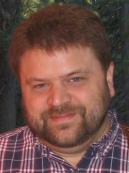 Forward Leaning Software Engineer
Forward Leaning Software Engineer
Brian Sletten is a liberal arts-educated software engineer with a focus on using and evangelizing forward-leaning technologies. He has a background as a system architect, a developer, a security consultant, a mentor, a team lead, an author and a trainer and operates in all of those roles as needed. His experience has spanned the online game, defense, finance, academic, hospitality, retail and commercial domains. He has worked with a wide variety of technologies such as network matrix switch controls, 3D simulation/visualization, Grid Computing, P2P and Semantic Web-based systems. He has a B.S. in Computer Science from the College of William and Mary. He is President of Bosatsu Consulting, Inc. and lives in Los Angeles, CA.
He focuses on web architecture, resource-oriented computing, social networking, the Semantic Web, scalable systems, security consulting and other technologies of the late 20th and early 21st Centuries.


 Architect, Web Security Expert
Architect, Web Security Expert
Ken has been a practitioner and instructor of RUP since the late 1990s, and an extreme programmer and coach since the middle 2000s. Ken has worked with Fortune 500 companies to small startups in the roles of developer, designer, application architect and enterprise architect. Ken's current focus is on enterprise system automation and continuous delivery systems.
Ken is an international speaker on the subject of software engineering speaking at conferences such as JavaOne, JavaZone, Jax-India, and The Strange Loop. He is a regular speaker with NFJS where he is best known for his architecture and security hacking talks. In 2009, Ken was honored by being awarded the JavaOne Rockstar Award at JavaOne in SF, California and the JavaZone Rockstar Award at JavaZone in Oslo, Norway as the top ranked speaker.


 Core Member of the Grails Development Team
Core Member of the Grails Development Team
Core member of the Grails development team, Jeff Brown, is a Senior Software Engineer with SpringSource. Jeff has been involved in designing and building object oriented systems for over 15 years. Jeff's areas of expertise include web development with Groovy & Grails, Java and agile development.


 Developer, Consultant, Author
Developer, Consultant, Author
Tim is a full-stack generalist and passionate teacher who loves coding, presenting, and working with people. He believes the best developer is one who is well-informed of specifics and can also make deep connections between software development and the broader world. He has recently been exploring non-relational data stores, continuous deployment, and how software architecture should resemble an ant colony.
His firm, the August Technology Group, helps clients with product development, technology consulting, and technology upgrade projects atop the JVM. The August Group's technology preferences reflect the generalist sensibilities of its founder, and its development practices are always lightweight, self-improving, and humanizing by design.
Tim is a speaker internationally and on the No Fluff Just Stuff tour in the United States, and is co-president of the Denver Open Source User Group in the Denver area, co-author of the DZone Clojure RefCard, co-presenter of the best-selling O'Reilly Git Master Class, co-author of Building and Testing with Gradle, and a member of the O'Reilly Expert Network.
He lives in Littleton, CO with the wife of his youth and their three children.


 Agile Architect/CTO
Agile Architect/CTO
Peter is the CTO of SKiNNiO. He presents internationally and writes extensively on domain specific languages, agile architecture, NoSQL and requirements and estimating. He helps teams to develop great software quickly by improving the requirements gathering, estimating, project management processes, engineering practices and tools used.
He is on the program committee for Code Generation in Cambridge, England and the Domain Specific Modeling workshop at SPLASH (was ooPSLA). He has presented at a range of conferences including ooPSLA, Code Generation, Practical Product Lines, the British Computer Society Software Practices Advancement conference and the No Fluff Just Stuff tour. He has been published in IEEE Software, Dr. Dobbs, IBM developerWorks, Information Week, Methods & Tools, NFJS the Magazine and is a regular contributor to GroovyMag.


 CTO and Co-Founder, Terracotta, Inc.
CTO and Co-Founder, Terracotta, Inc.
Ari Zilka founded Terracotta in 2003 and is the company’s Chief Technology Officer. Combining business and technology leadership, Ari was an Entrepreneur-in-Residence at Accel Partners and worked at PriceWaterhouseCoopers with some of the world’s leading brands. He was Chief Architect at Walmart.com where he built and led a team of core engineers. And in the mid 1990s, Ari invented a new object relational database that still exceeds the capabilities and performance of database technology today


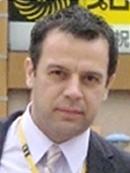 Sr. Software Engineer, Spring Integration team - SpringSource/VMWare
Sr. Software Engineer, Spring Integration team - SpringSource/VMWare
Oleg is an Sr. Software Engineer with SpringSource/VMWare and has 14+ years of experience in software engineering across multiple disciplines including software architecture and design, consulting, business analysis and application development. He currently focuses on delivering simple but powerful Spring based solutions to the North American market.
After starting his career in the world of COBOL & CICS, Oleg has been focusing on professional Java and Java EE development since 1999. Since 2004 he has been heavily involved in using several open source technologies and platforms with Spring Framework at the forefront, while working on a number of projects around the world and spanning industries such as Telecommunication, Banking, Law Enforcement, US DOD and others.
Oleg’s current passions include Event Driven Architecture (EDA), Grid Computing, Test Driven development and Aspect Oriented Programming while his Spring passions are aligned with Spring Integration framework (http://www.springsource.org/spring-integration) where Oleg is a core committer.
You can regularly spot Oleg on the Spring Forums contributing to a number of topics.
A resident of the Philadelphia area, Oleg enjoys windsurfing, scuba diving, snowboarding, hockey and traveling when he can find some spare time.


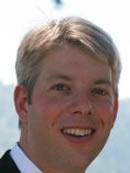 Principal Architect, salesforce.com
Principal Architect, salesforce.com
Rob Woollen is a Principal Architect at Salesforce.com. At Salesforce Rob leads the architecture for Salesforce Chatter, a real-time collaboration platform. Prior to Salesforce, Rob spent 9 years with BEA Systems serving as the WebLogic Server Chief Architect. Rob holds a BSE in computer science from Princeton University.


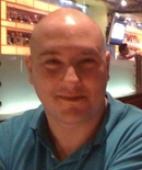 SpringSource Software Engineer
SpringSource Software Engineer
David works at SpringSource as a Senior Engineer. He is working on a Flex application for a cloud product and is also on the Spring Web Team.
David has been doing software development for over 15 years. He's been using Java since 1998 and involved in using Open Source almost as long. He's an Apache committer on Struts and Commons Validator, as well as the creator of Commons Validator (although currently no longer active on either). David has focused on Web and Enterprise development for most of his career, and started working with the Spring Framework in 2006.
David runs the website Spring by Example, which is a site for sharing Spring examples. David expects this site will become a general resource for Spring Examples and ultimately save developers time.


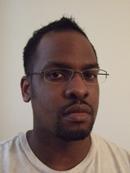 Co-creator of Griffon and Author of Learning HTML5 Game Programming
Co-creator of Griffon and Author of Learning HTML5 Game Programming
James Williams is a Senior Software Engineer for Taulia based in Silicon Valley and a frequent conference speaker. He is a co-creator of the Griffon project, a rich desktop framework for Java applications. He and his team WalkIN, created a product on a coach bus while riding to SXSW, and were crowned winners of StartupBus 2011. He is the author of the upcoming book "Learning HTML5 Game Programming..." for Addison-Wesley. He blogs at http://jameswilliams.be/blog and tweets as @ecspike.


 Senior Consultant, VMware
Senior Consultant, VMware
Mike is a Senior Consultant with SpringSource and has 10+ years experience in Java enterprise development and consulting. He started using Spring and Spring Security shortly after the first release and has deep knowledge about making simple, transparent and powerful security solutions but still retaining maintainable code. He is a committer of the Spring Security Framework and the creator of the Spring Security Kerberos Extension. He regularly speaks at various conferences and publishes work around Application Security and Spring.


 Developer Evangelist, salesforce.com
Developer Evangelist, salesforce.com
Quinton Wall is a Developer Evangelist for Salesforce.com where he is a regular technical contributor and speaker at cloud industry events and media sites. For over 15 years, Quinton has been at the forefront of Internet technologies being a founding member of the Australia Java Users Group, building the prototype for the Looksmart search engine, and leading engineering teams across the globe. Quinton now brings this wealth of experience to cloud believing that the future of technology and cloud computing is harnessing the power of convergent clouds.


 Architect of Spring Insight and SpringSource Principal Software Engineer
Architect of Spring Insight and SpringSource Principal Software Engineer
Jon is the architect of Spring Insight and has more than 15 years of professional experience writing software. He has the privilege of leading the Insight team, a very skilled, agile group of developers committed to giving developers and operators tools to reduce complexity and overhead.
Prior to SpringSource, Jon was a principal engineer at Hyperic and co-founded the product eventually known as Hyperic HQ. He has spent more time capturing and displaying performance data than he cares to .. measure.


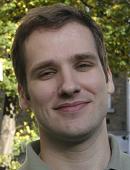 Senior Software Engineer, SpringSource.
Senior Software Engineer, SpringSource.
Mark Thomas is a Senior Software Engineer with SpringSource. At SpringSource Mark leads the integration of Tomcat with tc Server and has also had a hand in the development and integration of the additional serviceability functionality.
Mark has been using and developing Apache Tomcat for more than five years. He became involved in the development of Tomcat when he needed better control over the SSL configuration than was available at the time. After fixing that first bug, he started working his way through the remaining Tomcat bugs and is still going. Along the way, Mark became a Tomcat committer and PMC member, volunteered to be the Tomcat 4 release manager, created the Tomcat security pages, became a member of the ASF, joined the Apache Security Committee and is an Apache Commons PMC member where he contributes to Commons Pool, DBCP and Daemon. He also helps maintain the ASF's Bugzilla instances.
Mark has a MEng in Electronic and Electrical Engineering from the University of Birmingham, United Kingdom.


 CTO & Co-founder, Azul Systems
CTO & Co-founder, Azul Systems
Gil Tene is CTO and co-founder of Azul Systems. He has been involved with virtual machine technologies for the past 20 years and has been building Java technology-based products since 1995. Gil pioneered Azul's Continuously Concurrent Compacting Collector (C4), Java Virtualization, Elastic Memory, and various managed runtime and systems stack technologies that combine to deliver the industry's most scalable and robust Java platforms. "In 2006 he was named one of the Top 50 Agenda Setters in the technology industry by Silicon.com. Prior to co-founding Azul, Gil held key technology positions at Nortel Networks, Shasta Networks and at Check Point Software Technologies, where he delivered several industry-leading traffic management solutions including the industry's first Firewall-1 based security appliance. He architected operating systems for Stratus Computer, clustering solutions at Qualix/Legato, and served as an officer in the Israeli Navy Computer R and D unit. Gil holds a BSEE from The Technion Israel Institute of Technology, and has been awarded 24 patents in computer-related technologies.


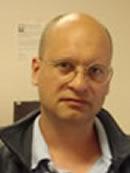 Lead of Spring Batch, SpringSource Principal Consultant
Lead of Spring Batch, SpringSource Principal Consultant
Dr David Syer is the technical lead on Spring Batch, the batch processing framework and toolkit from SpringSource. He is an experienced, delivery-focused architect and development manager. He has designed and built successful enterprise software solutions using Spring, and implemented them in major financial institutions worldwide. David is known for his clear and informative training style and has deep knowledge and experience with all aspects of real-life usage of the Spring framework. He enjoys creating business value from the application of simple principles to enterprise architecture. David joined SpringSource from a leading risk management software vendor where he worked closely with SpringSource on a number of projects. Recent publications have appeared in Balance Sheet, Operational Risk and Derivatives Technology.


 Staff Engineer at SpringSource, VMware
Staff Engineer at SpringSource, VMware
I began my career as a C/C++ programmer working on VINES, a distributed directory services product at Banyan Systems. Over the years I've worked on various Java Web applications including a set of multi-tenant e-commerce web applications, an investment accounting system, a trading and risk management system, and others.
I've been using Spring and many of the Spring projects since 2006. I've helped many to learn or to use Spring more effectively through teaching and consulting. Presently I am a comitter on the Spring MVC and the Spring Web Flow projects. My current home is New York city.


 Manager, Hyperic Technical Support
Manager, Hyperic Technical Support
Melanie is Manager of Hyperic Technical Support. Prior to her role with Hyperic she was an Escalation Engineer for VMware, where she worked for three years, specializing in the support and troubleshooting of core vSphere technologies. She is a Virtualization Certified Professional in VI 3 and vSphere 4 architecture. Her main work at VMware has been in the training and preparation of their global support engineers and partners in Bangalore, India. She also participated in the support readiness training of vSphere 4.1 release prior to moving to Hyperic technical support.
Before VMware, Melanie was a software analyst for McKesson, as a product specialist in the configuration and design of their clinical documentation software and started her career as a Unix system administrator for Sun Microsystems.
Melanie holds a BS degree from the University of Colorado at Denver in Computer Information Systems and is a Colorado native, where she still resides, enjoying the snow and sunshine.


 Software Engineer and Roo Developer at SpringSource
Software Engineer and Roo Developer at SpringSource
Dr Stefan Schmidt has been a Software Engineer with SpringSource since early 2008. He is currently based in the Sydney, Australia office, where he has been a key Roo developer since the project began. Stefan's work on Roo focuses on many of the most popular add-ons, including those which provide web, search and messaging features.
Stefan has been developing Java enterprise applications since 2003. Prior to his work at SpringSource, Stefan has been teaching various Enterprise Java subjects at the University of Technology in Sydney. He mentored hundreds of students in the design of enterprise software architectures with focus on scalability, separation of concerns and design patterns using enterprise Java technologies.


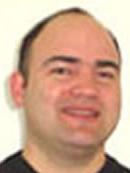 Developer Advocate and works to promote Google's APIs
Developer Advocate and works to promote Google's APIs
Christian Schalk is a Developer Advocate and works to promote Google's APIs and technologies. He is currently engaging the international Web development community with Google's new OpenSocial API. Before joining Google, Chris was a Principal Product Manager and technology evangelist at Oracle in the Java development tools group. Chris also co-authored the book: "JavaServer Faces, The Complete Reference" published through McGraw-Hill-Osborne. Chris was also one of the original members of the Open Ajax alliance and helped Oracle and later Google join the alliance. Chris has spoken on Web, Java and Ajax development at numerous Oracle, Java and Ajax conferences, as well as Google related events including Google Developer Day and recently at Google IO.


 Architect, Accenture
Architect, Accenture
Vipul Savjani is a manager in the Accenture's Architecture Innovation organization. Vipul has more than nine years of diverse experience in developing software products and solutions. Vipul is interested in and focuses on emerging technologies and methodologies including Cloud Computing, Dynamic Languages, Model-Driven Development, and Agile Methodologies.


 Original Spring Developer & Director of R&D, SpringSource
Original Spring Developer & Director of R&D, SpringSource
Colin is Director of R&D at SpringSource (now a division of VMware), which he co-founded in 2004. He is one of the original core committers on the Spring Framework, a published author, and public speaker. Since starting SpringSource he has served in a number of roles throughout various parts of the organization, including Engineering, Service Delivery, Support, and Sales. Colin is at his best when combining both technical as well as business and customer facing aspects.
Colin has had a long and varied career spanning 23 years in both the enterprise and shrinkwrap software space, including previous experience developing for and building out a retail software company.
Immediately prior to SpringSource, Colin spent 5 years as architect/chief architect at a leading software incubator and VC firm. Colin's role was split between one part hands on architecture, design, and coding, another part mentoring and teaching best practices at the code and process level, and a final part performing technical due diligence and consulting for the VC arm.
Throughout his career, Colin's experience, wide ranging interests and general knowledge in the technology space have led him to be a resource that others have been able to draw on for advice. In general, Colin's background has left him with a deep knowledge of all it takes to successfully release good software, at the code, process, and business level.


 VP of Engineering, Cloudsoft Corporation
VP of Engineering, Cloudsoft Corporation
Aled has over a decade’s experience developing distributed applications, mostly in the enterprise sector. Particular areas of interest include concurrency, fault tolerance and transactional semantics.
Prior to joining Cloudsoft, Aled was Chief Architect at Enigmatec Corporation. He holds a PhD (Computer Science) from the University of St Andrews.


 Head of Grails Development for SpringSource
Head of Grails Development for SpringSource
As Head of Grails Development for SpringSource, Graeme Rocher is the project lead and co-founder of the Grails web application framework. He's a member of the JSR-241 Expert Group which standardizes the Groovy language. Graeme authored the Definitive Guide to Grails for Apress and is a frequent speaker at JavaOne, JavaPolis, NoFluffJustStuff, JAOO, the Sun TechDays and more. Graeme joined SpringSource in late 2008 upon the acquisition of G2One Inc. Before founding G2One, Graeme was the CTO of SkillsMatter, a skills transfer company specializing in open source technology and agile software development, where Graeme was in charge of the company's courseware development strategy and general technical direction.


 co-author of "Professional Java Development with the Spring Framework"
co-author of "Professional Java Development with the Spring Framework"
Thomas has been a developer on the Spring Framework project since early 2003, contributing to enhancements of the JDBC framework portion.
Thomas currently works as a consultant for SpringSource specializing in Java EE and database projects. He has been involved with developing database applications, both as a DBA and as an application developer for over 20 years, using a wide variety of languages and databases.
Thomas is co-author of "Professional Java Development with the Spring Framework" together with Rod Johnson, Juergen Hoeller, Alef Arendsen, and Colin Sampaleanu, published by Wrox in 2005.


 Author of POJOs in Action
Author of POJOs in Action
Chris Richardson is a developer and architect with over 20 years of experience. He is a Java Champion and the author of POJOs in Action, which describes how to build enterprise Java applications with POJOs and frameworks such as Spring and Hibernate. Chris is the founder of CloudFoundry.com and works on cloud technology. He has a computer science degree from the University of Cambridge in England and lives in Oakland, CA with his wife and three children.


 Google Software Engineer
Google Software Engineer
Chris Ramsdale has worked extensively in the mobile space, starting as a Software Engineer at Motorola in 1997, and then joining local start ups as a Tech Lead and Product Manager. Chris is currently a Product Manager for Google App Engine focused on developer tools and platform services.


 Chief Architect, GemFire Data Grid products
Chief Architect, GemFire Data Grid products
As the Chief Architect for GemFire product line, Jags is responsible for the technology direction for its high performance distributed data Grid and virtualization platform. Jags has represented GemStone Systems in the EJB expert group and the J2EE platform specification. In the past, Jags represented BEA in the W3C SOAP protocol specification, JAXM and other standards. Jags has presented in several conferences in the past on Data management, clustering and grid computing(Javaone, W3C workshop, Java user groups, Open Grid Forum, Platform Grid conference etc) . He has over 20 years of experience, a bachelors degree in computer science and a masters degree in management of science and technology.


 Technical Director, RabbitMQ
Technical Director, RabbitMQ
Matthias Radestock is the co-creator and Technical Director of RabbitMQ, an open-source, open-standards business & cloud messaging technology, featuring an Erlang-based server and clients and extensions in a multitude of programming languages. RabbitMQ was acquired by SpringSource in April 2010.
Matthias has a Ph.D. in Software Engineering from Imperial College and is the author of several papers in international journals on distributed system coordination and programming languages. His commercial experience during the past decade includes directorships and senior technical roles in several Internet technology companies.


 Founder & Project Lead for Spring Web Services
Founder & Project Lead for Spring Web Services
Arjen Poutsma is a senior enterprise application architect with more than fifteen years' experience in commercial software environments. During this time he has worked with both J2EE and Microsoft .NET.
In 2004, Arjen started to specialise in Web Services and Service Oriented Architectures. During this period he has conducted trainings and has researched SOAs in large organisations.
Arjen is the founder and the project lead for the Spring Web Services. This Spring project aims at facilitating development of document-driven web services. Recently, Arjen worked on the REST support in Spring 3.0. Arjen has also contributed to various other open source projects, including XFire, NEO and others.
Since early 2005, Arjen has been a consultant for SpringSource in The Netherlands. Currently, he is a Software Engineer.


 Founder Spring.NET
Founder Spring.NET
Dr. Mark Pollack has worked extensively in the financial sector as an architect and developer on various front office trading systems that involved a mixture of Microsoft and Java technologies. Always interested in best practices and improving the software development process, Mark has been a core Spring (Java) developer since 2003 and founded its Microsoft counterpart, Spring.NET, in 2004 which he continues to lead.
Prior to joining SpringSource, he was a founding partner at CodeStreet, LLC, an independent software vendor in the financial services industry. This year Mark has been recognized as a Microsoft Most Valuable Professional (MVP) for his involvement in the technical community.


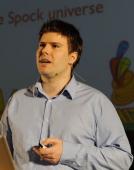 Creator of the Spock Framework
Creator of the Spock Framework
Peter Niederwieser is a computer language enthusiast from Linz, Austria. Having used Java since 1997, Peter nowadays prefers to work with more flexible languages - in particular Groovy, Scala, and Clojure. Peter is the creator of
In his day job, Peter is a Principal Software Engineer at


 Justin Murray is an Alliances Technologist at VMware.
Justin Murray is an Alliances Technologist at VMware.
Justin Murray holds a technical alliances role at VMware, where he has worked for three years. His main work at VMware is in helping ISV partners to test, prove and optimize performance of their products on the VMware vSphere platform. Justin also helps VMware's customers with virtualizing their business applications and infrastructure and advises them on best practice approaches to virtualizing Java-based applications in particular. Previous to joining VMware, Justin worked at HP on management software and on Java on HP-UX.


 Software Engineer, Neo Technology
Software Engineer, Neo Technology
David has been passionate about computers ever since he was given his first Amiga 500 (with the RAM upgrade) at age seven. Now, 19 years later, he works as a software engineer in the valley for Neo Technology, commercial backer of Neo4j, the most widely deployed graph database in the world. He loves his supporting family, he loves his fantastic job, and he loves programming. Oh and beer, he also loves beer.


 Director of Support Services, SpringSource
Director of Support Services, SpringSource
Marty is Director of Support Services at SpringSource. Prior to the acquisition of Hyperic by SpringSource, Marty was the Director of Customer Success at Hyperic.
Before Hyperic, Marty was Director of Global Support Services and Operations at Red Hat, one of the world's leading open source providers. While at Red Hat, Marty lead various global initiatives from policy transparency to systems efficiency to support readiness while dealing with the occasional angry Enterprise customer. During his tenure at Red Hat he built the Asia-Pacific Support operations from the ground up while on assignment for two years in Australia. Additionally he held Developer and Director roles in the Information Technology department as part of the Enterprise Application Development team.
Marty holds a BS degree from North Carolina State University in Computer Science and now resides in the San Francisco Bay Area.


 Sudhir Menon, Director (R&D) VMWare Inc.
Sudhir Menon, Director (R&D) VMWare Inc.
With over 20 years of cutting edge software experience with marquee firms like Gemstone, Intel, EDS and CenterSpan communications, Sudhir Menon is one of the key architects for the Gemfire Enterprise Data Fabric. Sudhir is the Director of Engineering for GemFire and hold multiple patents in the areas of scaled up networking systems. His expertise in distributed data management spans multiple languages (Java, C++ and .NET) and multiple platforms and he has architected and developed network stacks for the last 10+ years. At Centerspan communications, he was one of the key architects who built the largest secure peer to peer content distribution platform over the internet.


 Principal Engineer in the Office of the CTO, VMWare
Principal Engineer in the Office of the CTO, VMWare
Richard McDougall is a Principal Engineer in the Office of the CTO at VMware, where he focuses on scalability, observability and performance of virtualization systems. One of his particular projects is characterizing the performance of Oracle Database on VMware Infrastructure.
Richard is the co-author of “Solaris Internals”, “Solaris Performance and Tools” (solarisinternals.com) and the lead author for “Resource Management” (Prentice Hall/Sun Blueprints). He has written numerous articles and papers on measurement, monitoring and capacity planning of Solaris systems, and frequently speaks at industry and customer technical conferences on the topics of system performance and resource management.
Richard and his performance team have published and blogged on several Oracle performance topics on vmware.com including http://www.vmware.com/resources/techresources/1055 and http://blogs.vmware.com/performance/ .


 Senior Sales Engineer, SpringSource
Senior Sales Engineer, SpringSource
Tom McCuch is a Senior Sales Engineer for SpringSource with over twenty years of experience in software engineering. Tom specializes in the architecture, implementation, and deployment of distributed systems requiring high Reliability, Availability, and Scalability (RAS) features. Before joining SpringSource, Tom consulted enterprise clients across multiple industries in the architecture of mission-critical solutions based on open source software as well as led the engineering of enterprise Java middleware supporting next-generation telecommunications products deployed at tier-1 telcos both in the U.S. and Europe.


 Senior Systems Engineer
Senior Systems Engineer
Steve Mayzak is part of the Cloud Applications Platform team at
VMware. As part of this team he is focused on mapping our solutions to
customers needs and ensuring that what we offer fits their requirements.
He is constantly in the field working with customers on their Enterprise Java and Cloud initiatives.


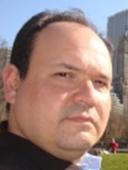 Manager, Accenture
Manager, Accenture
Maudrit Martinez is manager in the Accenture's Architecture Innovation organization, where he focuses on technology architecture, custom enterprise application development and emerging technologies. He currently leads Accenture’s Foundation Platform for JavaTM (AFP-J) and Dynamic Languages initiatives.
Maudrit has more than 16 years of professional experience in software design and development across multiple industries, including financial services, telecommunication, media and entertainment. He holds a BSc. in Computer Engineering and a Master in Business Management from the Universidad Rafael Urdaneta. His interests include software architecture, agile software development, framework design, system scalability, process improvement and project management.


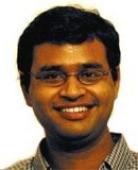 Google Software Engineer
Google Software Engineer
Amit is a software engineer on the Google Web Toolkit team, where he works towards GWT delivering "productivity for developers, performance for users." In particular, he has contributed to improving GWT's development mode, testability of GWT applications, and resource selection in GWT. He holds a Ph.D. degree in Computer Science from Carnegie Mellon University, has founded a VC-backed Web startup, and enjoys mathematical puzzles.


 Developer Advocate
Developer Advocate
Josh Long is the Spring developer advocate. Josh is the lead author on Apress’ Spring Recipes, 2nd Edition, and a SpringSource committer and contributor. When he's not hacking on code, he can be found at the local Java User Group or at the local coffee shop. Josh likes solutions that push the boundaries of the technologies that enable them. His interests include scalability, BPM, grid processing, mobile computing and so-called "smart" systems. He blogs at blog.springsource.org or joshlong.com.


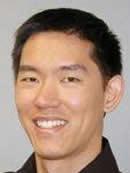 Hyperic Co-Founder & Product Manager
Hyperic Co-Founder & Product Manager
Charles Lee was a co-founder of Hyperic, before Hyperic was acquired by SpringSource. Prior to co-founding Hyperic, Lee was a senior software engineer at Covalent. There, he built Covalent's configuration management product for Apache (CMP), and he spearheaded and architected the application management software (CAM), which later became Hyperic HQ.
Before Covalent, Lee developed a document management system for retail store build-outs based on open-source technology at WiseConnect. Lee also held senior engineering position at Hewlett-Packard, where he was instrumental in developing print drivers for network LaserJets for the Asian market, as well as developing the UI framework used for LaserJet drivers for all markets. Lee also developed the first GUI printer configuration framework for AutoCAD while a senior engineer at Autodesk. Lee was an early engineer at Backflip, where he created the document publishing system for the website based on mod_perl.
Lee is now product manager of several products, including Hyperic, Cloud Foundry, and Spring Insight.


 Lead, Spring GemFire, Hadoop, Redis
Lead, Spring GemFire, Hadoop, Redis
Costin Leau is an engineer within the SpringSource. His interests include data access and aspect oriented programming. With significant development experience, Costin has worked on various Spring Framework features (cache abstraction, JPA, java config), led the Spring Dynamic Modules (Spring OSGi probject) and the Spring-inspired, OSGi 4.2 Blueprint Service RI. Currently Costin is working in the NOSQL and Big Data area, leading the Spring integration with GemFire, Hadoop and Redis.


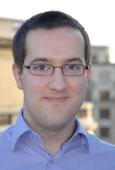 Head of Groovy Development for SpringSource
Head of Groovy Development for SpringSource
As Head of Groovy Development for SpringSource, Guillaume Laforge is the official Groovy Project Manager, and the spec lead of JSR-241, the Java Specification Request that standardizes the Groovy dynamic language. He is also a frequent conference speaker presenting Groovy and Grails at JavaOne, SpringOne, QCon, the Sun TechDays, and JavaPolis. Guillaume also co-authored Groovy in Action along with Dierk König. Before founding G2One, which was acquired by SpringSource in late 2008, and taking the role of VP Technology, Guillaume worked for OCTO Technology, a consultancy focusing on architecture and agile methodologies. While at OCTO, Guillaume developed new offerings around Groovy and Grails for its customers.


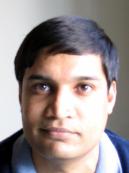 Author of AspectJ in Action, Principal at SpringSource
Author of AspectJ in Action, Principal at SpringSource
Ramnivas Laddad is a SpringSource Principal Enginner. He has over a decade of experience in applying his enterprise Java and aspect-oriented programming (AOP) expertise to middleware, design automation, networking, web application, user interface, and security projects.
Ramnivas Laddad is a well-known expert in enterprise Java, especially in the area of AOP and Spring. He is the author of AspectJ in Action, the best-selling book on AOP and AspectJ that has been lauded by industry experts for its presentation of practical and innovative AOP applications to solve real-world problems. Ramnivas, a Spring framework committer, is also an active presenter at leading industry events such as JavaOne, JavaPolis, No Fluff Just Stuff, SpringOne, Software Development, and has been an active member of both the AspectJ and Spring communities from their beginnings.


 Author of "Making Java Groovy"
Author of "Making Java Groovy"
Ken Kousen is the President of Kousen IT, Inc., through which he does technical training, mentoring, and consulting in all areas of Java and XML. He is the author of the upcoming book about Java/Groovy integration, entitled "Making Java Groovy", from Manning.
He has been a tech reviewer for several books on software development. Over the past decade he's taught thousands of developers in business and industry. He is also an adjunct professor at the Rensselaer Polytechnic Institute site in Hartford, CT. His academic background includes two BS degrees from M.I.T., an MS and a Ph.D. from Princeton, and an MS in Computer Science from R.P.I.


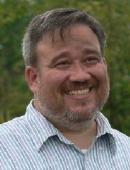 Author of 'Grails: A Quick-Start Guide'
Author of 'Grails: A Quick-Start Guide'
Dave is a consultant helping organizations of all sizes to develop applications more quickly (and have more fun doing it) with Grails. Dave has been involved in enterprise software development for the past 15 years. He has worked as a developer, architect, project manager, mentor and trainer. Dave has presented at user groups and national conferences. He is also the founder of the Capital Java User Group in Madison, Wisconsin, the Gateway Groovy Users in St. Louis, MO, and the author of Grails: A Quick-Start Guide, published by the Pragmatic Programmers. . Dave's Groovy and Grails related thoughts can be found at http://dave-klein.blogspot.com


 co-author of "Groovy in Action"
co-author of "Groovy in Action"
Paul King leads ASERT, an organization based in Brisbane, Australia which provides software development, training and mentoring services to customers wanting to embrace new technologies, harness best practices and innovate. He has been contributing to open source projects for nearly 20 years and is an active committer on numerous projects including Groovy. Paul speaks at international conferences, publishes in software magazines and journals, and is a co-author of Manning's best-seller: Groovy in Action.


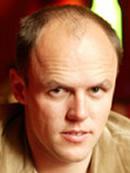 CEO of Tasktop, Creator of the Eclipse Mylyn Project
CEO of Tasktop, Creator of the Eclipse Mylyn Project
Dr. Mik Kersten is the CEO of Tasktop Technologies, creator of the Eclipse Mylyn open source project and inventor of the task-focused interface. As a research scientist at Xerox PARC, Mik implemented the first aspect-oriented programming tools for AspectJ. He created Mylyn and the task-focused interface during his PhD in Computer Science at the University of British Columbia. Mik has been an Eclipse committer since 2002, is an elected member of the Eclipse Board of Directors and serves on the Eclipse Architecture Council. Mik's thought leadership on task-focused collaboration makes him a popular speaker at software conferences, and he was voted a JavaOne Rock Star speaker in 2008 and 2009. He enjoys building tools that offload our brains and make it easier to get creative work done. Follow @mik_kersten on Twitter.


 Consultant Partner Integration Engineer, EMC
Consultant Partner Integration Engineer, EMC
Scot Junkin is Consultant Partner Integration Engineer for the Cloud Infrastructure Group at EMC Corporation and is responsible for guiding partners through technical hurdles on their way to success with EMC’s Cloud Storage solution, EMC Atmos.
Scot joined EMC in June of 2009 with the objectives of driving adoption of a new more flexible paradigm of IT for customers within the Enterprise. Prior to joining EMC, Scot consulted for a variety of technology startups focused on cloud computing, with a focus on their technical and go-to-market strategies. Scot also held strategic positions with MessageSling and Jingle Networks.
Scot holds an MS and a BS in Computer Science from Worcester Polytechnic Institute.


 Creator of Spring & Best Selling Author of J2EE without EJB
Creator of Spring & Best Selling Author of J2EE without EJB
Rod Johnson is the father of Spring, which grew out of his influential book, “Expert One-on-One J2EE Design and Development,” which initiated the “lightweight” transformation of enterprise Java. Rod co-founded SpringSource, where he served as CEO until its 2009 acquisition by VMware, where he is now a Senior Vice President.
Rod is an authority on enterprise Java architecture, a thought leader on open source development and business models, and a popular speaker at conferences around the world.
Rod has over 15 years technology, management and business experience. He holds a BA with Honors in Computer Science, Mathematics and Musicology as well as a PhD from the University of Sydney.


 VP of Engineering, Alfresco
VP of Engineering, Alfresco
Responsible for managing Alfresco's research and development team and ensuring both innovation and quality are delivered in Alfresco's software.
Paul has over 20 years experience of managing teams in collaborative research and development, both in open source and proprietary software organizations, including IBM® and Documentum®. His focus has always been to realize advanced technology solutions to real world problems.
His expertise covers Knowledge-based Expert Systems, Neural Networks, Information Extraction and Multilingual Natural Language Processing. Paul has been pivotal in a number of innovation start-ups, as well as having extensive experience of corporate production systems with Resumix® and Documentum®. Paul has PhD in Artificial Intelligence from the University of Surrey.


 Co-founder of the Spring Framework Project
Co-founder of the Spring Framework Project
Juergen has been the most active Spring developer since the open source project began from Rod's Interface21 framework back in February 2003. Juergen and Rod together continue to provide the direction for Spring.
Juergen has earned great respect in the Spring and J2EE communities for his energy, the quality of his code, his incredible attention to detail, and his huge contribution in Spring forums and mailing lists.
Juergen is an experienced consultant, with outstanding expertise in web applications, transaction management, O/R mapping technologies, and lightweight remoting. He has specialized in J2EE since early 2000, having held technology leader positions in various projects ranging from enterprise application integration to web-based data visualization.


 Senior Software Engineer at SpringSource
Senior Software Engineer at SpringSource
Jennifer Hickey is a senior software engineer for SpringSource, the company behind Spring. She holds a master's degree in software engineering from the Florida Institute of Technology. Jennifer specializes in enterprise application management, with a focus on application modeling methodologies and techniques for rapid development and deployment of management agents. Her interests include aspect oriented programming, asynchronous messaging, JMX, and OSGi.
Jennifer is also very interested in improving organizational productivity through testing. In a previous position, she won an excellence award for introducing automated unit, integration, and regression testing into the development process.
Prior to joining SpringSource, Jennifer was a principal architect of a large-scale network management system.


 CTO Cloudsoft Corporation
CTO Cloudsoft Corporation
Alex brings twenty years experience designing software solutions in the enterprise, start-up, and academic sectors. Most recently Alex was with Enigmatec Corporation where he led the development of what is now the Monterey Middleware platform. Previous to that, he founded PocketWatch Systems, commercialising results from his doctoral research. Alex holds a PhD (Informatics) and an MSc (Cognitive Science) from the University of Edinburgh and an AB (Mathematics) from Princeton University. Alex was both a USA Today Academic All-Star and a Marshall Scholar.


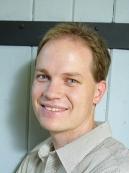 Senior Software Engineer, Open-Source Architect, and Web Services Expert
Senior Software Engineer, Open-Source Architect, and Web Services Expert
Ryan Heaton is a senior software engineer at FamilySearch.org, with specific responsibility for the design and development of the FamilySearch public Web service API. His expertise in the cutting edge of Web service technologies has spawned a significant set of open-source projects including Enunciate (a build-time Web service enhancement engine) and the OAuth extension for Spring Security. Ryan is also involved in a number of working groups for the development of technologies related to Web services and has been invited to share his expertise in a variety of professional conferences.
Ryan loves to code, and is occasionally surprised to discover that he actually gets a paycheck for doing something so enjoyable. But what’s even more surprising is that he has a beautiful wife and four boys that love him despite his geeky hobbies.


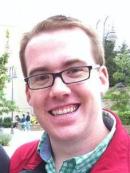 Senior Consultant, Object Partners, Inc
Senior Consultant, Object Partners, Inc
Colin Harrington is a Senior Consultant at Object Partners, Inc with over 3.5 years of Grails experience. Based in Minnesota, Colin has 10+ years of experience developing web-based applications.
Colin is an agile practitioner and has been a key component of many powerful fast-paced local and remote teams with varying levels of composition and ability. He is a Technical leader and a forward thinker with a knack for delivering potent and engaging web-applications.
Colin is an active member of the Groovy and Grails community and an active speaker at local user groups, events and conferences such as MinneBar, GUM, GR8Conf in the US, etc.


 dm Server Team Core Developer
dm Server Team Core Developer
Ben Hale is a senior software engineer with Springsource and a core developer on the SpringSource dm Server project. Ben specializes in middleware development with using technologies such as OSGi and Aspect Oriented Programming as well as directing the build and release processes for all products in the Spring and SpringSource portfolios.
His interests include middle-tier architecture and effective build and release management strategies.
Prior to joining SpringSource, Ben spent several years leading teams in architecture and development of large-scale enterprise management applications for the telecommunications industry.


 Senior Software Engineer, SpringSource
Senior Software Engineer, SpringSource
Jeremy Grelle is an open source software engineer with SpringSource, a division of VMware, who specializes in bringing the cutting-edge techniques of web application development to the Java and Spring ecosystems. He is the creator of the Spring JavaScript, Spring Faces, and Spring BlazeDS Integration projects, and he represents SpringSource on the JSR-314 Expert Group for JSF 2.0. He is a software artisan with extensive experience in combining server-side Java with the latest web browser technologies to deliver a rich and usable experience for the end user on the web.
Jeremy is a frequent speaker at industry conferences such as JavaOne, The Spring Experience, SpringOne, JSFOne, TheServerSide Java Symposium, and Java and Flex user group events, and always enjoys getting out and showing his fellow developers how to bend web browsers to their will and the possibilities of what can be created with Spring and its wealth of complimentary web technologies.


 Director of Developer Relations, SpringSource
Director of Developer Relations, SpringSource
Adam is the Director of Developer Relations at SpringSource and has extensive experience in enterprise Java community management. Prior to joining SpringSource, Adam ran BEA's dev2dev community and was a product evangelist, technology educator and public speaker for BEA's WebLogic products.


 Spring Integration Lead
Spring Integration Lead
Mark Fisher is an engineer within the SpringSource division of VMware and lead of the Spring Integration project. He is also a committer on the core Spring Framework and the Spring BlazeDS Integration project. Mark has provided consulting services for clients across numerous industries, and he has trained hundreds of developers how to use the Spring Framework and related projects effectively. Mark speaks regularly at conferences and user groups in America and Europe.


 Sr. Java/Groovy Developer, Groovy Committer
Sr. Java/Groovy Developer, Groovy Committer
Hamlet D'Arcy has been writing software for over a decade, and has spent considerable time coding in C++, Java, and Groovy. He's passionate about learning new languages and different ways to think about problems. Hamlet is the founder of the Basel-based Hackergarten open source coding group, and regularly participates and speaks at local and international user groups and conferences. Hamlet is a committer on the Groovy and CodeNarc projects, and is a contributor on a few other open source projects (including JConch and the IDEA Groovy Plugin). He blogs regularly at http://hamletdarcy.blogspot.com and can be found on Twitter as HamletDRC (http://twitter.com/hamletdrc).


 IT Architect, EMC Corporation
IT Architect, EMC Corporation
Brian Dussault is an IT Architect with EMC Corporation and has 13+ years of experience in software engineering across multiple disciplines including web applications, integration, and SOA. His interests include agile development, private cloud automation, and next generation integration architecture.


 Lead, SpringSource Tool Suite and Spring IDE
Lead, SpringSource Tool Suite and Spring IDE
Christian is a Principal Software Engineer for SpringSource and is the leader of the Tools Team responsible for SpringSource development tools including SpringSource Tool Suite. Since 2004 Christian has led the well known Spring IDE open source project that provides development tools for the Spring Portfolio based on Eclipse.
Christian has been developing Java enterprise applications since 1997. During this time, Christian designed complex software architectures with a focus on multi-tiered, web-based, client-server applications using enterprise Java technologies and the Spring Framework. Prior to joining SpringSource, Christian worked as consultant and project manager for one of the leading global technology consulting firms in the financial sector in central Europe.
Christian has presented on a variety of enterprise Java topics at conferences such as JAX, W-JAX, SpringOne and The Spring Experience.


 SpringSource Principal & Founding Partner
SpringSource Principal & Founding Partner
Keith Donald is a principal and founding partner at SpringSource, the company behind Spring and a division of VMware. At SpringSource, Keith is a full-time member of the Spring development team focusing on web application development productivity. He is also the architect behind SpringSource's state-of-the-art training curriculum, which has provided practical Spring training to over 10,000 students worldwide.
Over his career, Keith, an experienced enterprise software developer and mentor, has built business applications for customers spanning a diverse set of industries including banking, network management, information assurance, education, retail, and healthcare. He is particularly skilled at translating business requirements into technical solutions.


 Founder of Gradle and CEO of Gradleware
Founder of Gradle and CEO of Gradleware
Hans Dockter is the founder and project lead of the Gradle build system and the CEO of Gradleware, a company that provides training, support and consulting for Gradle and all forms of enterprise software project automation in general.
Hans has 13 years of experience as a software developer, team leader, architect, trainer, and technical mentor. Hans is a thought leader in the field of project automation and has successfully been in charge of numerous large-scale enterprise builds. He is also an advocate of Domain Driven Design, having taught classes and delivered presentations on this topic together with Eric Evans. In the earlier days, Hans was also a committer for the JBoss project and founded the JBoss-IDE.


 Google Software Engineer
Google Software Engineer
Rajeev Dayal is a Google software engineer on the Google Web Toolkit (GWT) team. His primary focus is the Google Plugin for Eclipse (GPE), which involves both fun stuff (making Eclipse do cool things) and not-so-fun stuff (tracing through a zillion lines of Eclipse source to figure out how to make Eclipse do cool things).
Rajeev has also done work on GWT's user interface library, specifically on accessibility, widget development, and fighting browser quirks.
Rajeev holds Bachelors and Masters degrees in Computer Science from the University of Waterloo and Georgia Tech.


 Author of "Groovy Recipes"
Author of "Groovy Recipes"
Scott Davis is the founder of ThirstyHead.com, a training company that specializes in Groovy and Grails training.
Scott published one of the first public websites implemented in Grails in 2006 and has been actively working with the technology ever since. Author of the book Groovy Recipes: Greasing the Wheels of Java and two ongoing IBM developerWorks article series (Mastering Grails and in 2009, Practically Groovy), Scott writes extensively about how Groovy and Grails are the future of Java development.


 Grails Portal Project Team Member
Grails Portal Project Team Member
Joshua has been programming in Java for 12 years.. He now works for Cognizant Technology Solutions as a Senior Architect specializing in Open Source SOA and resides in Gotha, FL.
Joshua is presently working on the Grails Portal project, hosted on Google code (http://code.google.com/p/grailsportal/) which has the goal of creating a simple personalization scheme in Groovy and Grails.


 CTO and Co-Founder of Incept5
CTO and Co-Founder of Incept5
John Davies is co-founder and CTO of Incept5. Incept5 have been intimately involved in implementing Visa's new capabilities and initiatives around the payments world. John's past includes global chief architect at JP Morgan and BNP Paribas, co-founder and CTO of C24 later sold to Iona and then Progress Software where he was technical director. John specialises in high performance, low latency enterprise architectures, Incept5 have products ranging form top selling iPhone/iPad apps to a high performance matching and reconciliation engine and consult to a number of large clients on IT strategy. John has co-authored several enterprise Java and architecture books and is a frequent speaker at banking and technology conferences.


 CTO of SpringSource
CTO of SpringSource
Adrian Colyer is the CTO of SpringSource and has more than a dozen years of experience leading teams in Java and enterprise middleware.
Adrian Colyer is the leader of the AspectJ open source project and a well-known industry expert on the topic of aspect-oriented programming (AOP). He is a co-author of the book "Eclipse AspectJ : Aspect-Oriented Programming in Eclipse with AspectJ and AJDT," and has also published numerous book chapters, articles and published papers. His short essay, "AOP without the buzzwords" has been described as "the best explanation of AOP, ever."
In 2004, Adrian was recognized as one of the top 100 young innovators in the world by MIT Technology Review for his contributions to the development and adoption of aspect-oriented programming in industry.
Adrian founded the AspectJ Development Tools project (AJDT) on Eclipse.org in 2003, a project that continues to lead the world in providing IDE support for AOP. As leader of the AspectJ project, Adrian has overseen several releases of the compiler and designed and implemented many of the AspectJ 5 language extensions to support Java 5 features.
Prior to joining SpringSource, Adrian gained over a decade of experience in building enterprise middleware at IBM. Whilst there he oversaw the introduction of aspect-oriented programming to many IBM development teams.
Adrian holds a BSc, Computer Science from University of Southampton.


 Sr. Software Engineer with SpringSource
Sr. Software Engineer with SpringSource
Andy Clement is a senior software engineer at SpringSource, based in the languages and tools lab in Vancouver. Andy has more than ten years experience in Java and Enterprise Application Development. He is a recognized expert on Aspect Oriented Programming and leads the Eclipse AspectJ project as well as being co-founder of the Eclipse AspectJ Development Tools project. Most recently he has been using his compiler knowledge to enable first class language support for Groovy in Eclipse.


 JSF EG Member, PrimeFaces Lead, Apache MyFaces PMC
JSF EG Member, PrimeFaces Lead, Apache MyFaces PMC
Cagatay Civici is a member of JavaServer Faces Expert Group who defines the JSF specification(JSR-314), the founder and project lead of popular PrimeFaces Component Suite and PMC member of open source JSF implementation Apache MyFaces. He's a recognized speaker in international conferences including Jazoon, W-JAX, JSFSummit, JSFDays and many local events such as JUGs. Cagatay is also an author and technical reviewer of several books regarding web application development with Java and JSF. As an experienced trainer, he has trained over 100 java developers on Java EE technologies mainly JSF, Spring and JPA. Cagatay is currently working as a consultant for Prime Technology in Turkey.


 Director of Developer Evangelism, salesforce.com
Director of Developer Evangelism, salesforce.com
Dave Carroll is the Director of Developer Evangelism at salesforce.com. In Dave’s 8 years at salesforce.com, his focus has been on growing the developer community around the company’s Force.com Platform as a Service. Dave was instrumental in launching and validating the Force.com platform. Dave has also led and participated in the creation of many developer tools, including the Force.com Toolkit for AJAX, Force.com Toolkit for Adobe Flex and the Force.com IDE Eclipse plugin. Dave has spent over 15 years developing software on a variety of platforms.


 Force.com Labs lead, salesforce.com
Force.com Labs lead, salesforce.com
Reid Carlberg leads the Force.com Labs program for salesforce.com. Reid helps internal developers define, create and publish solutions using the full variety of tools available on the Force.com platform. Before joining the salesforce.com ecosystem in 2007, Reid built apps using a variety of technologies and was an early adopter of the Spring Framework and other lightweight Java technologies. He holds a masters degree in software engineering and lives in the Chicago area.


 Chief Customer Architect and Evangelist, vFabric, VMWare Inc
Chief Customer Architect and Evangelist, vFabric, VMWare Inc
Starting as a Smalltalk developer at IBM, David has been building or architecting enterprise systems in object languages for over 20 years. Working for both GemStone and Oracle, he has focused on the issues that arise between applications and the data they depend on in high performance and distributed systems.
David currently advises customers worldwide on their application of VMWare's vFabric technologies, including GemFire, tcServer, RabittMQ and Hyperic.


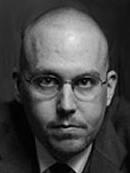 SpringSource R&D
SpringSource R&D
Jon works with the Spring Data, Grails, RabbitMQ, and other teams to provide next-generation data and messaging capabilities for modern Ajax and mobile applications. He's been working with Spring Data to provide mapping capabilities for NoSQL databases like MongoDB and Riak and he's working with RabbitMQ and NoSQL to provide modern evented and message-driven data utilities. He authored the Grails support for Riak as well as contributes Erlang-based utilities for the Riak and RabbitMQ communities.
Prior to SpringSource, Jon developed private cloud architectures at the world's largets Pizza Hut franchisee, developed Lotus Domino, J2EE, PHP and even Perl CGI applications in BBEdit on an aged Mac, and got his start in web-based development 15 years ago, as an intelligence analyst for the US Air Force, when NCSA Mosaic 1.0 was cool.


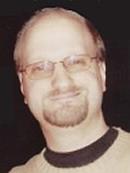 Senior Software Engineer, VMware
Senior Software Engineer, VMware
Currently a Senior Software Engineer for SpringSource where he is the Technical Lead and Community Evangelist for the Spring.NET Framework, Stephen brings his varied 18-year-plus experience in software and technology to the design and delivery of Software Engineering Solutions and Frameworks for other Software Engineers. In addition to his work on Spring.NET, Stephen is also an active contributor to several other .NET Open-Source Software projects including NHibernate, NDbUnit, and others as well having developed a number of Visual Studio productivity add-ins.
Active in the software development community, Stephen speaks publicly, blogs (semi-)regularly, and is the author of several popular screencast series focused on Agile and ALT.NET concepts and technologies including the widely-praised 15-part Summer of NHibernate video series introducing viewers to the popular open-source O/RM tool. Stephen is also a founding/organizing member of the NYC ALT.NET user group which meets monthly to discuss Agile-focused techniques and technologies in the world of Microsoft software development and beyond.


 Core Member of the Grails Development Team
Core Member of the Grails Development Team
Burt Beckwith is a Java and Groovy developer with over ten years of experience in a variety of industries including biotech, travel, e-learning, social networking, and financial services. For the past three years he's been working with Grails and Groovy full-time. Along the way he's created over fifteen Grails plugins and made significant contributions to several others. He was the technical editor for Grails in Action.


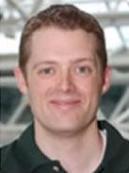 Spring Framework Committer
Spring Framework Committer
Chris is an engineer for SpringSource and a member of the core Spring Framework development team. Chris joined SpringSource (then Interface21) in 2007, focused on training, consulting and leading the development effort to bring code-based configuration to the core Spring container. In 2010, Chris transitioned to full-time engineering, and continues to focus on Spring Framework development. You can find him online as @cbeams at both GitHub and Twitter.


 Member of Technical Staff, VMware
Member of Technical Staff, VMware
Swapnil is a software engineer on the GemFire team of vFabric Cloud application platform at VMware. He is passionate about enabling scalable applications, loves programming and the challenges that a distributed system offers. At Gemstone systems, he has worked on a variety of things from transactions in a distributed system to a complex event processing engine. Currently he is the Lead for "GemFire as a L2 cache for Hibernate" project. Swapnil has a Master degree in Computer Science from George Mason University.


 Co-Founder & Lead Developer of EnergyScoreCards
Co-Founder & Lead Developer of EnergyScoreCards
Jean Barmash is the co-founder and lead developer of EnergyScoreCards, a startup company that helps benchmark energy efficiency of multi-family buildings. He is responsible for architecture and implementation of the SaaS software using the Grails framework.
To this role Jean brings over 10 years of experience in different areas of software industry. Most recently, he was Director of Technical Services at Alfresco Software, the Open Source Enterprise Content Management Company, where his responsibilities included architecture and hands-on development of content centric solutions, training, and working with open source community. He also worked as Sr. Consultant and Trainer at several Wall Street Firms. Well-versed in both .NET and Java Platforms, Jean is interested in applying latest development techniques to interesting problems.
Jean is a frequent speaker on technology and architecture topics at various user groups and industry conferences. He is also the founder of the New York Groovy / Grails Meetup.


 Software Engineer
Software Engineer
Scott is a member of the web products team at SpringSource, where he focuses on creating and sustaining rich web applications and frameworks. Scott is the creator of the SpringSource Enterprise Bundle Repository, a production web application built on Spring 2.5, Spring MVC, and Spring JavaScript. He is also an expert in UI design, style, accessibility, and particularly skilled in interacting with customers to map business requirements to innovative software solutions. Over the course of his career, Scott has lead the successful development of mission-critical web applications in the areas of academia and technology infrastructure.


 Griffon Project Lead
Griffon Project Lead
Andres is a Java/Groovy developer and Java Champion, with more than 11 years of experience in software design and development. He has been involved in web and desktop application developments since the early days of Java. He has also been teacher of computer science courses in the most prestigious education institute in Mexico. His current interests include Groovy and Swing. He is a true believer of open source and has participated in popular projects like Groovy, Griffon, JMatter and DbUnit, as well as starting his own projects (Json-lib, EZMorph, GraphicsBuilder, JideBuilder). Founding member and current project lead of the Griffon framework. He blogs periodically at http://jroller.com/aalmiray. You can find him on twitter too as @aalmiray. He likes to spend time with his beloved wife, Ixchel, when not hacking around.


 Creator of Spring Security, Spring Roo & SpringSource Principal S/W Engineer
Creator of Spring Security, Spring Roo & SpringSource Principal S/W Engineer
Dr Ben Alex is a Principal Software Engineer with SpringSource, and has been working professionally in software since 1995. Ben founded the Spring Security project in 2003 and led its development into a popular, open-source security framework that is used in numerous government, banking and military installations. More recently Ben founded and serves as lead of the Spring Roo and Spring Shell projects, both of which deliver significant productivity and usability benefits to those using Spring technologies.
Ben's career history also includes other roles in software development and business. From 2005 until 2008, he led the establishment and exponential growth of SpringSource's operations in Asia-Pacific. Prior to SpringSource, Ben founded and grew a successful Australian software company, Acegi Technology Pty Limited. He has been a director and advisor to businesses in diverse industries including business services, intellectual property licensing and ecommerce.
In recent years, Ben has presented at technology conferences including JavaOne, The Server Side Java Symposium, JAOO, Oredev, SpringOne and The Spring Experience. He is a regular guest presenter at user groups across the world, with recent appearances in Sydney, Melbourne, Brisbane, Canberra, Perth, Singapore, Wellington, Auckland, Christchurch and Stockholm. He also authored the security chapter of the Wiley book, "Professional J2EE Development with Spring Framework," and maintains a blog at http://blog.springsource.com/main/author/bena/.


 Author of Spring in Action
Author of Spring in Action
Craig Walls has been professionally developing software for over 16 years (and longer than that for the pure geekiness of it). He is a senior engineer with SpringSource and is the author of Modular Java (published by Pragmatic Bookshelf) and Spring in Action and XDoclet in Action (both published by Manning). He's a zealous promoter of the Spring Framework, speaking frequently at local user groups and conferences and writing about Spring and OSGi on his blog. When he's not slinging code, Craig spends as much time as he can with his wife, two daughters, 4 birds and 3 dogs.


 Founder of Agile Developer, Inc.
Founder of Agile Developer, Inc.
Dr. Venkat Subramaniam, founder of Agile Developer, Inc., has trained and mentored thousands of software developers in the US, Canada, Europe, and Asia. Venkat helps his clients effectively apply and succeed with agile practices on their software projects, and speaks frequently at international conferences and user groups. Venkat is also an adjunct faculty and teaches CS courses remotely at the University of Houston. He is author of ".NET Gotchas," coauthor of 2007 Jolt Productivity Award winning "Practices of an Agile Developer," author of "Programming Groovy: Dynamic Productivity for the Java Developer" and "Programming Scala: Tackle Multi-Core Complexity on the Java Virtual Machine" (Pragmatic Bookshelf).


 Technical Architect, AutoZone
Technical Architect, AutoZone
Matt Stine is a Technical Architect at AutoZone in Memphis, TN. He is an eleven year veteran of the enterprise software and web development industries, with experience spanning the healthcare, biomedical research, e-commerce, and now retail store domains. His current focus is the development and support of an enterprise Java platform supporting 4600+ AutoZone stores. Matt appears frequently on the No Fluff Just Stuff symposium series tour, as well as at other conferences such as JavaOne, SpringOne/2GX, The Rich Web Experience, and The Project Automation Experience. He has served as Agile Zone Leader for DZone, and his articles also appear in GroovyMag and NFJS the Magazine. Matt is also author of the Selenium 2.0 DZone Refcard. When he’s not on the road, Matt also enjoys his role as President of the Memphis/Mid-South Java User Group. His current areas of interest include lean/agile software development, modular software architecture, object-oriented design, functional programming, automated testing of modern web applications, and NoSQL datastores.


 Forward Leaning Software Engineer
Forward Leaning Software Engineer
Brian Sletten is a liberal arts-educated software engineer with a focus on using and evangelizing forward-leaning technologies. He has a background as a system architect, a developer, a security consultant, a mentor, a team lead, an author and a trainer and operates in all of those roles as needed. His experience has spanned the online game, defense, finance, academic, hospitality, retail and commercial domains. He has worked with a wide variety of technologies such as network matrix switch controls, 3D simulation/visualization, Grid Computing, P2P and Semantic Web-based systems. He has a B.S. in Computer Science from the College of William and Mary. He is President of Bosatsu Consulting, Inc. and lives in Los Angeles, CA.
He focuses on web architecture, resource-oriented computing, social networking, the Semantic Web, scalable systems, security consulting and other technologies of the late 20th and early 21st Centuries.


 Architect, Web Security Expert
Architect, Web Security Expert
Ken has been a practitioner and instructor of RUP since the late 1990s, and an extreme programmer and coach since the middle 2000s. Ken has worked with Fortune 500 companies to small startups in the roles of developer, designer, application architect and enterprise architect. Ken's current focus is on enterprise system automation and continuous delivery systems.
Ken is an international speaker on the subject of software engineering speaking at conferences such as JavaOne, JavaZone, Jax-India, and The Strange Loop. He is a regular speaker with NFJS where he is best known for his architecture and security hacking talks. In 2009, Ken was honored by being awarded the JavaOne Rockstar Award at JavaOne in SF, California and the JavaZone Rockstar Award at JavaZone in Oslo, Norway as the top ranked speaker.


 Core Member of the Grails Development Team
Core Member of the Grails Development Team
Core member of the Grails development team, Jeff Brown, is a Senior Software Engineer with SpringSource. Jeff has been involved in designing and building object oriented systems for over 15 years. Jeff's areas of expertise include web development with Groovy & Grails, Java and agile development.


 Developer, Consultant, Author
Developer, Consultant, Author
Tim is a full-stack generalist and passionate teacher who loves coding, presenting, and working with people. He believes the best developer is one who is well-informed of specifics and can also make deep connections between software development and the broader world. He has recently been exploring non-relational data stores, continuous deployment, and how software architecture should resemble an ant colony.
His firm, the August Technology Group, helps clients with product development, technology consulting, and technology upgrade projects atop the JVM. The August Group's technology preferences reflect the generalist sensibilities of its founder, and its development practices are always lightweight, self-improving, and humanizing by design.
Tim is a speaker internationally and on the No Fluff Just Stuff tour in the United States, and is co-president of the Denver Open Source User Group in the Denver area, co-author of the DZone Clojure RefCard, co-presenter of the best-selling O'Reilly Git Master Class, co-author of Building and Testing with Gradle, and a member of the O'Reilly Expert Network.
He lives in Littleton, CO with the wife of his youth and their three children.


 Agile Architect/CTO
Agile Architect/CTO
Peter is the CTO of SKiNNiO. He presents internationally and writes extensively on domain specific languages, agile architecture, NoSQL and requirements and estimating. He helps teams to develop great software quickly by improving the requirements gathering, estimating, project management processes, engineering practices and tools used.
He is on the program committee for Code Generation in Cambridge, England and the Domain Specific Modeling workshop at SPLASH (was ooPSLA). He has presented at a range of conferences including ooPSLA, Code Generation, Practical Product Lines, the British Computer Society Software Practices Advancement conference and the No Fluff Just Stuff tour. He has been published in IEEE Software, Dr. Dobbs, IBM developerWorks, Information Week, Methods & Tools, NFJS the Magazine and is a regular contributor to GroovyMag.


 CTO and Co-Founder, Terracotta, Inc.
CTO and Co-Founder, Terracotta, Inc.
Ari Zilka founded Terracotta in 2003 and is the company’s Chief Technology Officer. Combining business and technology leadership, Ari was an Entrepreneur-in-Residence at Accel Partners and worked at PriceWaterhouseCoopers with some of the world’s leading brands. He was Chief Architect at Walmart.com where he built and led a team of core engineers. And in the mid 1990s, Ari invented a new object relational database that still exceeds the capabilities and performance of database technology today


 Sr. Software Engineer, Spring Integration team - SpringSource/VMWare
Sr. Software Engineer, Spring Integration team - SpringSource/VMWare
Oleg is an Sr. Software Engineer with SpringSource/VMWare and has 14+ years of experience in software engineering across multiple disciplines including software architecture and design, consulting, business analysis and application development. He currently focuses on delivering simple but powerful Spring based solutions to the North American market.
After starting his career in the world of COBOL & CICS, Oleg has been focusing on professional Java and Java EE development since 1999. Since 2004 he has been heavily involved in using several open source technologies and platforms with Spring Framework at the forefront, while working on a number of projects around the world and spanning industries such as Telecommunication, Banking, Law Enforcement, US DOD and others.
Oleg’s current passions include Event Driven Architecture (EDA), Grid Computing, Test Driven development and Aspect Oriented Programming while his Spring passions are aligned with Spring Integration framework (http://www.springsource.org/spring-integration) where Oleg is a core committer.
You can regularly spot Oleg on the Spring Forums contributing to a number of topics.
A resident of the Philadelphia area, Oleg enjoys windsurfing, scuba diving, snowboarding, hockey and traveling when he can find some spare time.


 Principal Architect, salesforce.com
Principal Architect, salesforce.com
Rob Woollen is a Principal Architect at Salesforce.com. At Salesforce Rob leads the architecture for Salesforce Chatter, a real-time collaboration platform. Prior to Salesforce, Rob spent 9 years with BEA Systems serving as the WebLogic Server Chief Architect. Rob holds a BSE in computer science from Princeton University.


 SpringSource Software Engineer
SpringSource Software Engineer
David works at SpringSource as a Senior Engineer. He is working on a Flex application for a cloud product and is also on the Spring Web Team.
David has been doing software development for over 15 years. He's been using Java since 1998 and involved in using Open Source almost as long. He's an Apache committer on Struts and Commons Validator, as well as the creator of Commons Validator (although currently no longer active on either). David has focused on Web and Enterprise development for most of his career, and started working with the Spring Framework in 2006.
David runs the website Spring by Example, which is a site for sharing Spring examples. David expects this site will become a general resource for Spring Examples and ultimately save developers time.


 Co-creator of Griffon and Author of Learning HTML5 Game Programming
Co-creator of Griffon and Author of Learning HTML5 Game Programming
James Williams is a Senior Software Engineer for Taulia based in Silicon Valley and a frequent conference speaker. He is a co-creator of the Griffon project, a rich desktop framework for Java applications. He and his team WalkIN, created a product on a coach bus while riding to SXSW, and were crowned winners of StartupBus 2011. He is the author of the upcoming book "Learning HTML5 Game Programming..." for Addison-Wesley. He blogs at http://jameswilliams.be/blog and tweets as @ecspike.


 Senior Consultant, VMware
Senior Consultant, VMware
Mike is a Senior Consultant with SpringSource and has 10+ years experience in Java enterprise development and consulting. He started using Spring and Spring Security shortly after the first release and has deep knowledge about making simple, transparent and powerful security solutions but still retaining maintainable code. He is a committer of the Spring Security Framework and the creator of the Spring Security Kerberos Extension. He regularly speaks at various conferences and publishes work around Application Security and Spring.


 Developer Evangelist, salesforce.com
Developer Evangelist, salesforce.com
Quinton Wall is a Developer Evangelist for Salesforce.com where he is a regular technical contributor and speaker at cloud industry events and media sites. For over 15 years, Quinton has been at the forefront of Internet technologies being a founding member of the Australia Java Users Group, building the prototype for the Looksmart search engine, and leading engineering teams across the globe. Quinton now brings this wealth of experience to cloud believing that the future of technology and cloud computing is harnessing the power of convergent clouds.


 Architect of Spring Insight and SpringSource Principal Software Engineer
Architect of Spring Insight and SpringSource Principal Software Engineer
Jon is the architect of Spring Insight and has more than 15 years of professional experience writing software. He has the privilege of leading the Insight team, a very skilled, agile group of developers committed to giving developers and operators tools to reduce complexity and overhead.
Prior to SpringSource, Jon was a principal engineer at Hyperic and co-founded the product eventually known as Hyperic HQ. He has spent more time capturing and displaying performance data than he cares to .. measure.


 Senior Software Engineer, SpringSource.
Senior Software Engineer, SpringSource.
Mark Thomas is a Senior Software Engineer with SpringSource. At SpringSource Mark leads the integration of Tomcat with tc Server and has also had a hand in the development and integration of the additional serviceability functionality.
Mark has been using and developing Apache Tomcat for more than five years. He became involved in the development of Tomcat when he needed better control over the SSL configuration than was available at the time. After fixing that first bug, he started working his way through the remaining Tomcat bugs and is still going. Along the way, Mark became a Tomcat committer and PMC member, volunteered to be the Tomcat 4 release manager, created the Tomcat security pages, became a member of the ASF, joined the Apache Security Committee and is an Apache Commons PMC member where he contributes to Commons Pool, DBCP and Daemon. He also helps maintain the ASF's Bugzilla instances.
Mark has a MEng in Electronic and Electrical Engineering from the University of Birmingham, United Kingdom.


 CTO & Co-founder, Azul Systems
CTO & Co-founder, Azul Systems
Gil Tene is CTO and co-founder of Azul Systems. He has been involved with virtual machine technologies for the past 20 years and has been building Java technology-based products since 1995. Gil pioneered Azul's Continuously Concurrent Compacting Collector (C4), Java Virtualization, Elastic Memory, and various managed runtime and systems stack technologies that combine to deliver the industry's most scalable and robust Java platforms. "In 2006 he was named one of the Top 50 Agenda Setters in the technology industry by Silicon.com. Prior to co-founding Azul, Gil held key technology positions at Nortel Networks, Shasta Networks and at Check Point Software Technologies, where he delivered several industry-leading traffic management solutions including the industry's first Firewall-1 based security appliance. He architected operating systems for Stratus Computer, clustering solutions at Qualix/Legato, and served as an officer in the Israeli Navy Computer R and D unit. Gil holds a BSEE from The Technion Israel Institute of Technology, and has been awarded 24 patents in computer-related technologies.


 Lead of Spring Batch, SpringSource Principal Consultant
Lead of Spring Batch, SpringSource Principal Consultant
Dr David Syer is the technical lead on Spring Batch, the batch processing framework and toolkit from SpringSource. He is an experienced, delivery-focused architect and development manager. He has designed and built successful enterprise software solutions using Spring, and implemented them in major financial institutions worldwide. David is known for his clear and informative training style and has deep knowledge and experience with all aspects of real-life usage of the Spring framework. He enjoys creating business value from the application of simple principles to enterprise architecture. David joined SpringSource from a leading risk management software vendor where he worked closely with SpringSource on a number of projects. Recent publications have appeared in Balance Sheet, Operational Risk and Derivatives Technology.


 Staff Engineer at SpringSource, VMware
Staff Engineer at SpringSource, VMware
I began my career as a C/C++ programmer working on VINES, a distributed directory services product at Banyan Systems. Over the years I've worked on various Java Web applications including a set of multi-tenant e-commerce web applications, an investment accounting system, a trading and risk management system, and others.
I've been using Spring and many of the Spring projects since 2006. I've helped many to learn or to use Spring more effectively through teaching and consulting. Presently I am a comitter on the Spring MVC and the Spring Web Flow projects. My current home is New York city.


 Manager, Hyperic Technical Support
Manager, Hyperic Technical Support
Melanie is Manager of Hyperic Technical Support. Prior to her role with Hyperic she was an Escalation Engineer for VMware, where she worked for three years, specializing in the support and troubleshooting of core vSphere technologies. She is a Virtualization Certified Professional in VI 3 and vSphere 4 architecture. Her main work at VMware has been in the training and preparation of their global support engineers and partners in Bangalore, India. She also participated in the support readiness training of vSphere 4.1 release prior to moving to Hyperic technical support.
Before VMware, Melanie was a software analyst for McKesson, as a product specialist in the configuration and design of their clinical documentation software and started her career as a Unix system administrator for Sun Microsystems.
Melanie holds a BS degree from the University of Colorado at Denver in Computer Information Systems and is a Colorado native, where she still resides, enjoying the snow and sunshine.


 Software Engineer and Roo Developer at SpringSource
Software Engineer and Roo Developer at SpringSource
Dr Stefan Schmidt has been a Software Engineer with SpringSource since early 2008. He is currently based in the Sydney, Australia office, where he has been a key Roo developer since the project began. Stefan's work on Roo focuses on many of the most popular add-ons, including those which provide web, search and messaging features.
Stefan has been developing Java enterprise applications since 2003. Prior to his work at SpringSource, Stefan has been teaching various Enterprise Java subjects at the University of Technology in Sydney. He mentored hundreds of students in the design of enterprise software architectures with focus on scalability, separation of concerns and design patterns using enterprise Java technologies.


 Developer Advocate and works to promote Google's APIs
Developer Advocate and works to promote Google's APIs
Christian Schalk is a Developer Advocate and works to promote Google's APIs and technologies. He is currently engaging the international Web development community with Google's new OpenSocial API. Before joining Google, Chris was a Principal Product Manager and technology evangelist at Oracle in the Java development tools group. Chris also co-authored the book: "JavaServer Faces, The Complete Reference" published through McGraw-Hill-Osborne. Chris was also one of the original members of the Open Ajax alliance and helped Oracle and later Google join the alliance. Chris has spoken on Web, Java and Ajax development at numerous Oracle, Java and Ajax conferences, as well as Google related events including Google Developer Day and recently at Google IO.


 Architect, Accenture
Architect, Accenture
Vipul Savjani is a manager in the Accenture's Architecture Innovation organization. Vipul has more than nine years of diverse experience in developing software products and solutions. Vipul is interested in and focuses on emerging technologies and methodologies including Cloud Computing, Dynamic Languages, Model-Driven Development, and Agile Methodologies.


 Original Spring Developer & Director of R&D, SpringSource
Original Spring Developer & Director of R&D, SpringSource
Colin is Director of R&D at SpringSource (now a division of VMware), which he co-founded in 2004. He is one of the original core committers on the Spring Framework, a published author, and public speaker. Since starting SpringSource he has served in a number of roles throughout various parts of the organization, including Engineering, Service Delivery, Support, and Sales. Colin is at his best when combining both technical as well as business and customer facing aspects.
Colin has had a long and varied career spanning 23 years in both the enterprise and shrinkwrap software space, including previous experience developing for and building out a retail software company.
Immediately prior to SpringSource, Colin spent 5 years as architect/chief architect at a leading software incubator and VC firm. Colin's role was split between one part hands on architecture, design, and coding, another part mentoring and teaching best practices at the code and process level, and a final part performing technical due diligence and consulting for the VC arm.
Throughout his career, Colin's experience, wide ranging interests and general knowledge in the technology space have led him to be a resource that others have been able to draw on for advice. In general, Colin's background has left him with a deep knowledge of all it takes to successfully release good software, at the code, process, and business level.


 VP of Engineering, Cloudsoft Corporation
VP of Engineering, Cloudsoft Corporation
Aled has over a decade’s experience developing distributed applications, mostly in the enterprise sector. Particular areas of interest include concurrency, fault tolerance and transactional semantics.
Prior to joining Cloudsoft, Aled was Chief Architect at Enigmatec Corporation. He holds a PhD (Computer Science) from the University of St Andrews.


 Head of Grails Development for SpringSource
Head of Grails Development for SpringSource
As Head of Grails Development for SpringSource, Graeme Rocher is the project lead and co-founder of the Grails web application framework. He's a member of the JSR-241 Expert Group which standardizes the Groovy language. Graeme authored the Definitive Guide to Grails for Apress and is a frequent speaker at JavaOne, JavaPolis, NoFluffJustStuff, JAOO, the Sun TechDays and more. Graeme joined SpringSource in late 2008 upon the acquisition of G2One Inc. Before founding G2One, Graeme was the CTO of SkillsMatter, a skills transfer company specializing in open source technology and agile software development, where Graeme was in charge of the company's courseware development strategy and general technical direction.


 co-author of "Professional Java Development with the Spring Framework"
co-author of "Professional Java Development with the Spring Framework"
Thomas has been a developer on the Spring Framework project since early 2003, contributing to enhancements of the JDBC framework portion.
Thomas currently works as a consultant for SpringSource specializing in Java EE and database projects. He has been involved with developing database applications, both as a DBA and as an application developer for over 20 years, using a wide variety of languages and databases.
Thomas is co-author of "Professional Java Development with the Spring Framework" together with Rod Johnson, Juergen Hoeller, Alef Arendsen, and Colin Sampaleanu, published by Wrox in 2005.


 Author of POJOs in Action
Author of POJOs in Action
Chris Richardson is a developer and architect with over 20 years of experience. He is a Java Champion and the author of POJOs in Action, which describes how to build enterprise Java applications with POJOs and frameworks such as Spring and Hibernate. Chris is the founder of CloudFoundry.com and works on cloud technology. He has a computer science degree from the University of Cambridge in England and lives in Oakland, CA with his wife and three children.


 Google Software Engineer
Google Software Engineer
Chris Ramsdale has worked extensively in the mobile space, starting as a Software Engineer at Motorola in 1997, and then joining local start ups as a Tech Lead and Product Manager. Chris is currently a Product Manager for Google App Engine focused on developer tools and platform services.


 Chief Architect, GemFire Data Grid products
Chief Architect, GemFire Data Grid products
As the Chief Architect for GemFire product line, Jags is responsible for the technology direction for its high performance distributed data Grid and virtualization platform. Jags has represented GemStone Systems in the EJB expert group and the J2EE platform specification. In the past, Jags represented BEA in the W3C SOAP protocol specification, JAXM and other standards. Jags has presented in several conferences in the past on Data management, clustering and grid computing(Javaone, W3C workshop, Java user groups, Open Grid Forum, Platform Grid conference etc) . He has over 20 years of experience, a bachelors degree in computer science and a masters degree in management of science and technology.


 Technical Director, RabbitMQ
Technical Director, RabbitMQ
Matthias Radestock is the co-creator and Technical Director of RabbitMQ, an open-source, open-standards business & cloud messaging technology, featuring an Erlang-based server and clients and extensions in a multitude of programming languages. RabbitMQ was acquired by SpringSource in April 2010.
Matthias has a Ph.D. in Software Engineering from Imperial College and is the author of several papers in international journals on distributed system coordination and programming languages. His commercial experience during the past decade includes directorships and senior technical roles in several Internet technology companies.


 Founder & Project Lead for Spring Web Services
Founder & Project Lead for Spring Web Services
Arjen Poutsma is a senior enterprise application architect with more than fifteen years' experience in commercial software environments. During this time he has worked with both J2EE and Microsoft .NET.
In 2004, Arjen started to specialise in Web Services and Service Oriented Architectures. During this period he has conducted trainings and has researched SOAs in large organisations.
Arjen is the founder and the project lead for the Spring Web Services. This Spring project aims at facilitating development of document-driven web services. Recently, Arjen worked on the REST support in Spring 3.0. Arjen has also contributed to various other open source projects, including XFire, NEO and others.
Since early 2005, Arjen has been a consultant for SpringSource in The Netherlands. Currently, he is a Software Engineer.


 Founder Spring.NET
Founder Spring.NET
Dr. Mark Pollack has worked extensively in the financial sector as an architect and developer on various front office trading systems that involved a mixture of Microsoft and Java technologies. Always interested in best practices and improving the software development process, Mark has been a core Spring (Java) developer since 2003 and founded its Microsoft counterpart, Spring.NET, in 2004 which he continues to lead.
Prior to joining SpringSource, he was a founding partner at CodeStreet, LLC, an independent software vendor in the financial services industry. This year Mark has been recognized as a Microsoft Most Valuable Professional (MVP) for his involvement in the technical community.


 Creator of the Spock Framework
Creator of the Spock Framework
Peter Niederwieser is a computer language enthusiast from Linz, Austria. Having used Java since 1997, Peter nowadays prefers to work with more flexible languages - in particular Groovy, Scala, and Clojure. Peter is the creator of
In his day job, Peter is a Principal Software Engineer at


 Justin Murray is an Alliances Technologist at VMware.
Justin Murray is an Alliances Technologist at VMware.
Justin Murray holds a technical alliances role at VMware, where he has worked for three years. His main work at VMware is in helping ISV partners to test, prove and optimize performance of their products on the VMware vSphere platform. Justin also helps VMware's customers with virtualizing their business applications and infrastructure and advises them on best practice approaches to virtualizing Java-based applications in particular. Previous to joining VMware, Justin worked at HP on management software and on Java on HP-UX.


 Software Engineer, Neo Technology
Software Engineer, Neo Technology
David has been passionate about computers ever since he was given his first Amiga 500 (with the RAM upgrade) at age seven. Now, 19 years later, he works as a software engineer in the valley for Neo Technology, commercial backer of Neo4j, the most widely deployed graph database in the world. He loves his supporting family, he loves his fantastic job, and he loves programming. Oh and beer, he also loves beer.


 Director of Support Services, SpringSource
Director of Support Services, SpringSource
Marty is Director of Support Services at SpringSource. Prior to the acquisition of Hyperic by SpringSource, Marty was the Director of Customer Success at Hyperic.
Before Hyperic, Marty was Director of Global Support Services and Operations at Red Hat, one of the world's leading open source providers. While at Red Hat, Marty lead various global initiatives from policy transparency to systems efficiency to support readiness while dealing with the occasional angry Enterprise customer. During his tenure at Red Hat he built the Asia-Pacific Support operations from the ground up while on assignment for two years in Australia. Additionally he held Developer and Director roles in the Information Technology department as part of the Enterprise Application Development team.
Marty holds a BS degree from North Carolina State University in Computer Science and now resides in the San Francisco Bay Area.


 Sudhir Menon, Director (R&D) VMWare Inc.
Sudhir Menon, Director (R&D) VMWare Inc.
With over 20 years of cutting edge software experience with marquee firms like Gemstone, Intel, EDS and CenterSpan communications, Sudhir Menon is one of the key architects for the Gemfire Enterprise Data Fabric. Sudhir is the Director of Engineering for GemFire and hold multiple patents in the areas of scaled up networking systems. His expertise in distributed data management spans multiple languages (Java, C++ and .NET) and multiple platforms and he has architected and developed network stacks for the last 10+ years. At Centerspan communications, he was one of the key architects who built the largest secure peer to peer content distribution platform over the internet.


 Principal Engineer in the Office of the CTO, VMWare
Principal Engineer in the Office of the CTO, VMWare
Richard McDougall is a Principal Engineer in the Office of the CTO at VMware, where he focuses on scalability, observability and performance of virtualization systems. One of his particular projects is characterizing the performance of Oracle Database on VMware Infrastructure.
Richard is the co-author of “Solaris Internals”, “Solaris Performance and Tools” (solarisinternals.com) and the lead author for “Resource Management” (Prentice Hall/Sun Blueprints). He has written numerous articles and papers on measurement, monitoring and capacity planning of Solaris systems, and frequently speaks at industry and customer technical conferences on the topics of system performance and resource management.
Richard and his performance team have published and blogged on several Oracle performance topics on vmware.com including http://www.vmware.com/resources/techresources/1055 and http://blogs.vmware.com/performance/ .


 Senior Sales Engineer, SpringSource
Senior Sales Engineer, SpringSource
Tom McCuch is a Senior Sales Engineer for SpringSource with over twenty years of experience in software engineering. Tom specializes in the architecture, implementation, and deployment of distributed systems requiring high Reliability, Availability, and Scalability (RAS) features. Before joining SpringSource, Tom consulted enterprise clients across multiple industries in the architecture of mission-critical solutions based on open source software as well as led the engineering of enterprise Java middleware supporting next-generation telecommunications products deployed at tier-1 telcos both in the U.S. and Europe.


 Senior Systems Engineer
Senior Systems Engineer
Steve Mayzak is part of the Cloud Applications Platform team at
VMware. As part of this team he is focused on mapping our solutions to
customers needs and ensuring that what we offer fits their requirements.
He is constantly in the field working with customers on their Enterprise Java and Cloud initiatives.


 Manager, Accenture
Manager, Accenture
Maudrit Martinez is manager in the Accenture's Architecture Innovation organization, where he focuses on technology architecture, custom enterprise application development and emerging technologies. He currently leads Accenture’s Foundation Platform for JavaTM (AFP-J) and Dynamic Languages initiatives.
Maudrit has more than 16 years of professional experience in software design and development across multiple industries, including financial services, telecommunication, media and entertainment. He holds a BSc. in Computer Engineering and a Master in Business Management from the Universidad Rafael Urdaneta. His interests include software architecture, agile software development, framework design, system scalability, process improvement and project management.


 Google Software Engineer
Google Software Engineer
Amit is a software engineer on the Google Web Toolkit team, where he works towards GWT delivering "productivity for developers, performance for users." In particular, he has contributed to improving GWT's development mode, testability of GWT applications, and resource selection in GWT. He holds a Ph.D. degree in Computer Science from Carnegie Mellon University, has founded a VC-backed Web startup, and enjoys mathematical puzzles.


 Developer Advocate
Developer Advocate
Josh Long is the Spring developer advocate. Josh is the lead author on Apress’ Spring Recipes, 2nd Edition, and a SpringSource committer and contributor. When he's not hacking on code, he can be found at the local Java User Group or at the local coffee shop. Josh likes solutions that push the boundaries of the technologies that enable them. His interests include scalability, BPM, grid processing, mobile computing and so-called "smart" systems. He blogs at blog.springsource.org or joshlong.com.


 Hyperic Co-Founder & Product Manager
Hyperic Co-Founder & Product Manager
Charles Lee was a co-founder of Hyperic, before Hyperic was acquired by SpringSource. Prior to co-founding Hyperic, Lee was a senior software engineer at Covalent. There, he built Covalent's configuration management product for Apache (CMP), and he spearheaded and architected the application management software (CAM), which later became Hyperic HQ.
Before Covalent, Lee developed a document management system for retail store build-outs based on open-source technology at WiseConnect. Lee also held senior engineering position at Hewlett-Packard, where he was instrumental in developing print drivers for network LaserJets for the Asian market, as well as developing the UI framework used for LaserJet drivers for all markets. Lee also developed the first GUI printer configuration framework for AutoCAD while a senior engineer at Autodesk. Lee was an early engineer at Backflip, where he created the document publishing system for the website based on mod_perl.
Lee is now product manager of several products, including Hyperic, Cloud Foundry, and Spring Insight.


 Lead, Spring GemFire, Hadoop, Redis
Lead, Spring GemFire, Hadoop, Redis
Costin Leau is an engineer within the SpringSource. His interests include data access and aspect oriented programming. With significant development experience, Costin has worked on various Spring Framework features (cache abstraction, JPA, java config), led the Spring Dynamic Modules (Spring OSGi probject) and the Spring-inspired, OSGi 4.2 Blueprint Service RI. Currently Costin is working in the NOSQL and Big Data area, leading the Spring integration with GemFire, Hadoop and Redis.


 Head of Groovy Development for SpringSource
Head of Groovy Development for SpringSource
As Head of Groovy Development for SpringSource, Guillaume Laforge is the official Groovy Project Manager, and the spec lead of JSR-241, the Java Specification Request that standardizes the Groovy dynamic language. He is also a frequent conference speaker presenting Groovy and Grails at JavaOne, SpringOne, QCon, the Sun TechDays, and JavaPolis. Guillaume also co-authored Groovy in Action along with Dierk König. Before founding G2One, which was acquired by SpringSource in late 2008, and taking the role of VP Technology, Guillaume worked for OCTO Technology, a consultancy focusing on architecture and agile methodologies. While at OCTO, Guillaume developed new offerings around Groovy and Grails for its customers.


 Author of AspectJ in Action, Principal at SpringSource
Author of AspectJ in Action, Principal at SpringSource
Ramnivas Laddad is a SpringSource Principal Enginner. He has over a decade of experience in applying his enterprise Java and aspect-oriented programming (AOP) expertise to middleware, design automation, networking, web application, user interface, and security projects.
Ramnivas Laddad is a well-known expert in enterprise Java, especially in the area of AOP and Spring. He is the author of AspectJ in Action, the best-selling book on AOP and AspectJ that has been lauded by industry experts for its presentation of practical and innovative AOP applications to solve real-world problems. Ramnivas, a Spring framework committer, is also an active presenter at leading industry events such as JavaOne, JavaPolis, No Fluff Just Stuff, SpringOne, Software Development, and has been an active member of both the AspectJ and Spring communities from their beginnings.


 Author of "Making Java Groovy"
Author of "Making Java Groovy"
Ken Kousen is the President of Kousen IT, Inc., through which he does technical training, mentoring, and consulting in all areas of Java and XML. He is the author of the upcoming book about Java/Groovy integration, entitled "Making Java Groovy", from Manning.
He has been a tech reviewer for several books on software development. Over the past decade he's taught thousands of developers in business and industry. He is also an adjunct professor at the Rensselaer Polytechnic Institute site in Hartford, CT. His academic background includes two BS degrees from M.I.T., an MS and a Ph.D. from Princeton, and an MS in Computer Science from R.P.I.


 Author of 'Grails: A Quick-Start Guide'
Author of 'Grails: A Quick-Start Guide'
Dave is a consultant helping organizations of all sizes to develop applications more quickly (and have more fun doing it) with Grails. Dave has been involved in enterprise software development for the past 15 years. He has worked as a developer, architect, project manager, mentor and trainer. Dave has presented at user groups and national conferences. He is also the founder of the Capital Java User Group in Madison, Wisconsin, the Gateway Groovy Users in St. Louis, MO, and the author of Grails: A Quick-Start Guide, published by the Pragmatic Programmers. . Dave's Groovy and Grails related thoughts can be found at http://dave-klein.blogspot.com


 co-author of "Groovy in Action"
co-author of "Groovy in Action"
Paul King leads ASERT, an organization based in Brisbane, Australia which provides software development, training and mentoring services to customers wanting to embrace new technologies, harness best practices and innovate. He has been contributing to open source projects for nearly 20 years and is an active committer on numerous projects including Groovy. Paul speaks at international conferences, publishes in software magazines and journals, and is a co-author of Manning's best-seller: Groovy in Action.


 CEO of Tasktop, Creator of the Eclipse Mylyn Project
CEO of Tasktop, Creator of the Eclipse Mylyn Project
Dr. Mik Kersten is the CEO of Tasktop Technologies, creator of the Eclipse Mylyn open source project and inventor of the task-focused interface. As a research scientist at Xerox PARC, Mik implemented the first aspect-oriented programming tools for AspectJ. He created Mylyn and the task-focused interface during his PhD in Computer Science at the University of British Columbia. Mik has been an Eclipse committer since 2002, is an elected member of the Eclipse Board of Directors and serves on the Eclipse Architecture Council. Mik's thought leadership on task-focused collaboration makes him a popular speaker at software conferences, and he was voted a JavaOne Rock Star speaker in 2008 and 2009. He enjoys building tools that offload our brains and make it easier to get creative work done. Follow @mik_kersten on Twitter.


 Consultant Partner Integration Engineer, EMC
Consultant Partner Integration Engineer, EMC
Scot Junkin is Consultant Partner Integration Engineer for the Cloud Infrastructure Group at EMC Corporation and is responsible for guiding partners through technical hurdles on their way to success with EMC’s Cloud Storage solution, EMC Atmos.
Scot joined EMC in June of 2009 with the objectives of driving adoption of a new more flexible paradigm of IT for customers within the Enterprise. Prior to joining EMC, Scot consulted for a variety of technology startups focused on cloud computing, with a focus on their technical and go-to-market strategies. Scot also held strategic positions with MessageSling and Jingle Networks.
Scot holds an MS and a BS in Computer Science from Worcester Polytechnic Institute.


 Creator of Spring & Best Selling Author of J2EE without EJB
Creator of Spring & Best Selling Author of J2EE without EJB
Rod Johnson is the father of Spring, which grew out of his influential book, “Expert One-on-One J2EE Design and Development,” which initiated the “lightweight” transformation of enterprise Java. Rod co-founded SpringSource, where he served as CEO until its 2009 acquisition by VMware, where he is now a Senior Vice President.
Rod is an authority on enterprise Java architecture, a thought leader on open source development and business models, and a popular speaker at conferences around the world.
Rod has over 15 years technology, management and business experience. He holds a BA with Honors in Computer Science, Mathematics and Musicology as well as a PhD from the University of Sydney.


 VP of Engineering, Alfresco
VP of Engineering, Alfresco
Responsible for managing Alfresco's research and development team and ensuring both innovation and quality are delivered in Alfresco's software.
Paul has over 20 years experience of managing teams in collaborative research and development, both in open source and proprietary software organizations, including IBM® and Documentum®. His focus has always been to realize advanced technology solutions to real world problems.
His expertise covers Knowledge-based Expert Systems, Neural Networks, Information Extraction and Multilingual Natural Language Processing. Paul has been pivotal in a number of innovation start-ups, as well as having extensive experience of corporate production systems with Resumix® and Documentum®. Paul has PhD in Artificial Intelligence from the University of Surrey.


 Co-founder of the Spring Framework Project
Co-founder of the Spring Framework Project
Juergen has been the most active Spring developer since the open source project began from Rod's Interface21 framework back in February 2003. Juergen and Rod together continue to provide the direction for Spring.
Juergen has earned great respect in the Spring and J2EE communities for his energy, the quality of his code, his incredible attention to detail, and his huge contribution in Spring forums and mailing lists.
Juergen is an experienced consultant, with outstanding expertise in web applications, transaction management, O/R mapping technologies, and lightweight remoting. He has specialized in J2EE since early 2000, having held technology leader positions in various projects ranging from enterprise application integration to web-based data visualization.


 Senior Software Engineer at SpringSource
Senior Software Engineer at SpringSource
Jennifer Hickey is a senior software engineer for SpringSource, the company behind Spring. She holds a master's degree in software engineering from the Florida Institute of Technology. Jennifer specializes in enterprise application management, with a focus on application modeling methodologies and techniques for rapid development and deployment of management agents. Her interests include aspect oriented programming, asynchronous messaging, JMX, and OSGi.
Jennifer is also very interested in improving organizational productivity through testing. In a previous position, she won an excellence award for introducing automated unit, integration, and regression testing into the development process.
Prior to joining SpringSource, Jennifer was a principal architect of a large-scale network management system.


 CTO Cloudsoft Corporation
CTO Cloudsoft Corporation
Alex brings twenty years experience designing software solutions in the enterprise, start-up, and academic sectors. Most recently Alex was with Enigmatec Corporation where he led the development of what is now the Monterey Middleware platform. Previous to that, he founded PocketWatch Systems, commercialising results from his doctoral research. Alex holds a PhD (Informatics) and an MSc (Cognitive Science) from the University of Edinburgh and an AB (Mathematics) from Princeton University. Alex was both a USA Today Academic All-Star and a Marshall Scholar.


 Senior Software Engineer, Open-Source Architect, and Web Services Expert
Senior Software Engineer, Open-Source Architect, and Web Services Expert
Ryan Heaton is a senior software engineer at FamilySearch.org, with specific responsibility for the design and development of the FamilySearch public Web service API. His expertise in the cutting edge of Web service technologies has spawned a significant set of open-source projects including Enunciate (a build-time Web service enhancement engine) and the OAuth extension for Spring Security. Ryan is also involved in a number of working groups for the development of technologies related to Web services and has been invited to share his expertise in a variety of professional conferences.
Ryan loves to code, and is occasionally surprised to discover that he actually gets a paycheck for doing something so enjoyable. But what’s even more surprising is that he has a beautiful wife and four boys that love him despite his geeky hobbies.


 Senior Consultant, Object Partners, Inc
Senior Consultant, Object Partners, Inc
Colin Harrington is a Senior Consultant at Object Partners, Inc with over 3.5 years of Grails experience. Based in Minnesota, Colin has 10+ years of experience developing web-based applications.
Colin is an agile practitioner and has been a key component of many powerful fast-paced local and remote teams with varying levels of composition and ability. He is a Technical leader and a forward thinker with a knack for delivering potent and engaging web-applications.
Colin is an active member of the Groovy and Grails community and an active speaker at local user groups, events and conferences such as MinneBar, GUM, GR8Conf in the US, etc.


 dm Server Team Core Developer
dm Server Team Core Developer
Ben Hale is a senior software engineer with Springsource and a core developer on the SpringSource dm Server project. Ben specializes in middleware development with using technologies such as OSGi and Aspect Oriented Programming as well as directing the build and release processes for all products in the Spring and SpringSource portfolios.
His interests include middle-tier architecture and effective build and release management strategies.
Prior to joining SpringSource, Ben spent several years leading teams in architecture and development of large-scale enterprise management applications for the telecommunications industry.


 Senior Software Engineer, SpringSource
Senior Software Engineer, SpringSource
Jeremy Grelle is an open source software engineer with SpringSource, a division of VMware, who specializes in bringing the cutting-edge techniques of web application development to the Java and Spring ecosystems. He is the creator of the Spring JavaScript, Spring Faces, and Spring BlazeDS Integration projects, and he represents SpringSource on the JSR-314 Expert Group for JSF 2.0. He is a software artisan with extensive experience in combining server-side Java with the latest web browser technologies to deliver a rich and usable experience for the end user on the web.
Jeremy is a frequent speaker at industry conferences such as JavaOne, The Spring Experience, SpringOne, JSFOne, TheServerSide Java Symposium, and Java and Flex user group events, and always enjoys getting out and showing his fellow developers how to bend web browsers to their will and the possibilities of what can be created with Spring and its wealth of complimentary web technologies.


 Director of Developer Relations, SpringSource
Director of Developer Relations, SpringSource
Adam is the Director of Developer Relations at SpringSource and has extensive experience in enterprise Java community management. Prior to joining SpringSource, Adam ran BEA's dev2dev community and was a product evangelist, technology educator and public speaker for BEA's WebLogic products.


 Spring Integration Lead
Spring Integration Lead
Mark Fisher is an engineer within the SpringSource division of VMware and lead of the Spring Integration project. He is also a committer on the core Spring Framework and the Spring BlazeDS Integration project. Mark has provided consulting services for clients across numerous industries, and he has trained hundreds of developers how to use the Spring Framework and related projects effectively. Mark speaks regularly at conferences and user groups in America and Europe.


 Sr. Java/Groovy Developer, Groovy Committer
Sr. Java/Groovy Developer, Groovy Committer
Hamlet D'Arcy has been writing software for over a decade, and has spent considerable time coding in C++, Java, and Groovy. He's passionate about learning new languages and different ways to think about problems. Hamlet is the founder of the Basel-based Hackergarten open source coding group, and regularly participates and speaks at local and international user groups and conferences. Hamlet is a committer on the Groovy and CodeNarc projects, and is a contributor on a few other open source projects (including JConch and the IDEA Groovy Plugin). He blogs regularly at http://hamletdarcy.blogspot.com and can be found on Twitter as HamletDRC (http://twitter.com/hamletdrc).


 IT Architect, EMC Corporation
IT Architect, EMC Corporation
Brian Dussault is an IT Architect with EMC Corporation and has 13+ years of experience in software engineering across multiple disciplines including web applications, integration, and SOA. His interests include agile development, private cloud automation, and next generation integration architecture.


 Lead, SpringSource Tool Suite and Spring IDE
Lead, SpringSource Tool Suite and Spring IDE
Christian is a Principal Software Engineer for SpringSource and is the leader of the Tools Team responsible for SpringSource development tools including SpringSource Tool Suite. Since 2004 Christian has led the well known Spring IDE open source project that provides development tools for the Spring Portfolio based on Eclipse.
Christian has been developing Java enterprise applications since 1997. During this time, Christian designed complex software architectures with a focus on multi-tiered, web-based, client-server applications using enterprise Java technologies and the Spring Framework. Prior to joining SpringSource, Christian worked as consultant and project manager for one of the leading global technology consulting firms in the financial sector in central Europe.
Christian has presented on a variety of enterprise Java topics at conferences such as JAX, W-JAX, SpringOne and The Spring Experience.


 SpringSource Principal & Founding Partner
SpringSource Principal & Founding Partner
Keith Donald is a principal and founding partner at SpringSource, the company behind Spring and a division of VMware. At SpringSource, Keith is a full-time member of the Spring development team focusing on web application development productivity. He is also the architect behind SpringSource's state-of-the-art training curriculum, which has provided practical Spring training to over 10,000 students worldwide.
Over his career, Keith, an experienced enterprise software developer and mentor, has built business applications for customers spanning a diverse set of industries including banking, network management, information assurance, education, retail, and healthcare. He is particularly skilled at translating business requirements into technical solutions.


 Founder of Gradle and CEO of Gradleware
Founder of Gradle and CEO of Gradleware
Hans Dockter is the founder and project lead of the Gradle build system and the CEO of Gradleware, a company that provides training, support and consulting for Gradle and all forms of enterprise software project automation in general.
Hans has 13 years of experience as a software developer, team leader, architect, trainer, and technical mentor. Hans is a thought leader in the field of project automation and has successfully been in charge of numerous large-scale enterprise builds. He is also an advocate of Domain Driven Design, having taught classes and delivered presentations on this topic together with Eric Evans. In the earlier days, Hans was also a committer for the JBoss project and founded the JBoss-IDE.


 Google Software Engineer
Google Software Engineer
Rajeev Dayal is a Google software engineer on the Google Web Toolkit (GWT) team. His primary focus is the Google Plugin for Eclipse (GPE), which involves both fun stuff (making Eclipse do cool things) and not-so-fun stuff (tracing through a zillion lines of Eclipse source to figure out how to make Eclipse do cool things).
Rajeev has also done work on GWT's user interface library, specifically on accessibility, widget development, and fighting browser quirks.
Rajeev holds Bachelors and Masters degrees in Computer Science from the University of Waterloo and Georgia Tech.


 Author of "Groovy Recipes"
Author of "Groovy Recipes"
Scott Davis is the founder of ThirstyHead.com, a training company that specializes in Groovy and Grails training.
Scott published one of the first public websites implemented in Grails in 2006 and has been actively working with the technology ever since. Author of the book Groovy Recipes: Greasing the Wheels of Java and two ongoing IBM developerWorks article series (Mastering Grails and in 2009, Practically Groovy), Scott writes extensively about how Groovy and Grails are the future of Java development.


 Grails Portal Project Team Member
Grails Portal Project Team Member
Joshua has been programming in Java for 12 years.. He now works for Cognizant Technology Solutions as a Senior Architect specializing in Open Source SOA and resides in Gotha, FL.
Joshua is presently working on the Grails Portal project, hosted on Google code (http://code.google.com/p/grailsportal/) which has the goal of creating a simple personalization scheme in Groovy and Grails.


 CTO and Co-Founder of Incept5
CTO and Co-Founder of Incept5
John Davies is co-founder and CTO of Incept5. Incept5 have been intimately involved in implementing Visa's new capabilities and initiatives around the payments world. John's past includes global chief architect at JP Morgan and BNP Paribas, co-founder and CTO of C24 later sold to Iona and then Progress Software where he was technical director. John specialises in high performance, low latency enterprise architectures, Incept5 have products ranging form top selling iPhone/iPad apps to a high performance matching and reconciliation engine and consult to a number of large clients on IT strategy. John has co-authored several enterprise Java and architecture books and is a frequent speaker at banking and technology conferences.


 CTO of SpringSource
CTO of SpringSource
Adrian Colyer is the CTO of SpringSource and has more than a dozen years of experience leading teams in Java and enterprise middleware.
Adrian Colyer is the leader of the AspectJ open source project and a well-known industry expert on the topic of aspect-oriented programming (AOP). He is a co-author of the book "Eclipse AspectJ : Aspect-Oriented Programming in Eclipse with AspectJ and AJDT," and has also published numerous book chapters, articles and published papers. His short essay, "AOP without the buzzwords" has been described as "the best explanation of AOP, ever."
In 2004, Adrian was recognized as one of the top 100 young innovators in the world by MIT Technology Review for his contributions to the development and adoption of aspect-oriented programming in industry.
Adrian founded the AspectJ Development Tools project (AJDT) on Eclipse.org in 2003, a project that continues to lead the world in providing IDE support for AOP. As leader of the AspectJ project, Adrian has overseen several releases of the compiler and designed and implemented many of the AspectJ 5 language extensions to support Java 5 features.
Prior to joining SpringSource, Adrian gained over a decade of experience in building enterprise middleware at IBM. Whilst there he oversaw the introduction of aspect-oriented programming to many IBM development teams.
Adrian holds a BSc, Computer Science from University of Southampton.


 Sr. Software Engineer with SpringSource
Sr. Software Engineer with SpringSource
Andy Clement is a senior software engineer at SpringSource, based in the languages and tools lab in Vancouver. Andy has more than ten years experience in Java and Enterprise Application Development. He is a recognized expert on Aspect Oriented Programming and leads the Eclipse AspectJ project as well as being co-founder of the Eclipse AspectJ Development Tools project. Most recently he has been using his compiler knowledge to enable first class language support for Groovy in Eclipse.


 JSF EG Member, PrimeFaces Lead, Apache MyFaces PMC
JSF EG Member, PrimeFaces Lead, Apache MyFaces PMC
Cagatay Civici is a member of JavaServer Faces Expert Group who defines the JSF specification(JSR-314), the founder and project lead of popular PrimeFaces Component Suite and PMC member of open source JSF implementation Apache MyFaces. He's a recognized speaker in international conferences including Jazoon, W-JAX, JSFSummit, JSFDays and many local events such as JUGs. Cagatay is also an author and technical reviewer of several books regarding web application development with Java and JSF. As an experienced trainer, he has trained over 100 java developers on Java EE technologies mainly JSF, Spring and JPA. Cagatay is currently working as a consultant for Prime Technology in Turkey.


 Director of Developer Evangelism, salesforce.com
Director of Developer Evangelism, salesforce.com
Dave Carroll is the Director of Developer Evangelism at salesforce.com. In Dave’s 8 years at salesforce.com, his focus has been on growing the developer community around the company’s Force.com Platform as a Service. Dave was instrumental in launching and validating the Force.com platform. Dave has also led and participated in the creation of many developer tools, including the Force.com Toolkit for AJAX, Force.com Toolkit for Adobe Flex and the Force.com IDE Eclipse plugin. Dave has spent over 15 years developing software on a variety of platforms.


 Force.com Labs lead, salesforce.com
Force.com Labs lead, salesforce.com
Reid Carlberg leads the Force.com Labs program for salesforce.com. Reid helps internal developers define, create and publish solutions using the full variety of tools available on the Force.com platform. Before joining the salesforce.com ecosystem in 2007, Reid built apps using a variety of technologies and was an early adopter of the Spring Framework and other lightweight Java technologies. He holds a masters degree in software engineering and lives in the Chicago area.


 Chief Customer Architect and Evangelist, vFabric, VMWare Inc
Chief Customer Architect and Evangelist, vFabric, VMWare Inc
Starting as a Smalltalk developer at IBM, David has been building or architecting enterprise systems in object languages for over 20 years. Working for both GemStone and Oracle, he has focused on the issues that arise between applications and the data they depend on in high performance and distributed systems.
David currently advises customers worldwide on their application of VMWare's vFabric technologies, including GemFire, tcServer, RabittMQ and Hyperic.


 SpringSource R&D
SpringSource R&D
Jon works with the Spring Data, Grails, RabbitMQ, and other teams to provide next-generation data and messaging capabilities for modern Ajax and mobile applications. He's been working with Spring Data to provide mapping capabilities for NoSQL databases like MongoDB and Riak and he's working with RabbitMQ and NoSQL to provide modern evented and message-driven data utilities. He authored the Grails support for Riak as well as contributes Erlang-based utilities for the Riak and RabbitMQ communities.
Prior to SpringSource, Jon developed private cloud architectures at the world's largets Pizza Hut franchisee, developed Lotus Domino, J2EE, PHP and even Perl CGI applications in BBEdit on an aged Mac, and got his start in web-based development 15 years ago, as an intelligence analyst for the US Air Force, when NCSA Mosaic 1.0 was cool.


 Senior Software Engineer, VMware
Senior Software Engineer, VMware
Currently a Senior Software Engineer for SpringSource where he is the Technical Lead and Community Evangelist for the Spring.NET Framework, Stephen brings his varied 18-year-plus experience in software and technology to the design and delivery of Software Engineering Solutions and Frameworks for other Software Engineers. In addition to his work on Spring.NET, Stephen is also an active contributor to several other .NET Open-Source Software projects including NHibernate, NDbUnit, and others as well having developed a number of Visual Studio productivity add-ins.
Active in the software development community, Stephen speaks publicly, blogs (semi-)regularly, and is the author of several popular screencast series focused on Agile and ALT.NET concepts and technologies including the widely-praised 15-part Summer of NHibernate video series introducing viewers to the popular open-source O/RM tool. Stephen is also a founding/organizing member of the NYC ALT.NET user group which meets monthly to discuss Agile-focused techniques and technologies in the world of Microsoft software development and beyond.


 Core Member of the Grails Development Team
Core Member of the Grails Development Team
Burt Beckwith is a Java and Groovy developer with over ten years of experience in a variety of industries including biotech, travel, e-learning, social networking, and financial services. For the past three years he's been working with Grails and Groovy full-time. Along the way he's created over fifteen Grails plugins and made significant contributions to several others. He was the technical editor for Grails in Action.


 Spring Framework Committer
Spring Framework Committer
Chris is an engineer for SpringSource and a member of the core Spring Framework development team. Chris joined SpringSource (then Interface21) in 2007, focused on training, consulting and leading the development effort to bring code-based configuration to the core Spring container. In 2010, Chris transitioned to full-time engineering, and continues to focus on Spring Framework development. You can find him online as @cbeams at both GitHub and Twitter.


 Member of Technical Staff, VMware
Member of Technical Staff, VMware
Swapnil is a software engineer on the GemFire team of vFabric Cloud application platform at VMware. He is passionate about enabling scalable applications, loves programming and the challenges that a distributed system offers. At Gemstone systems, he has worked on a variety of things from transactions in a distributed system to a complex event processing engine. Currently he is the Lead for "GemFire as a L2 cache for Hibernate" project. Swapnil has a Master degree in Computer Science from George Mason University.


 Co-Founder & Lead Developer of EnergyScoreCards
Co-Founder & Lead Developer of EnergyScoreCards
Jean Barmash is the co-founder and lead developer of EnergyScoreCards, a startup company that helps benchmark energy efficiency of multi-family buildings. He is responsible for architecture and implementation of the SaaS software using the Grails framework.
To this role Jean brings over 10 years of experience in different areas of software industry. Most recently, he was Director of Technical Services at Alfresco Software, the Open Source Enterprise Content Management Company, where his responsibilities included architecture and hands-on development of content centric solutions, training, and working with open source community. He also worked as Sr. Consultant and Trainer at several Wall Street Firms. Well-versed in both .NET and Java Platforms, Jean is interested in applying latest development techniques to interesting problems.
Jean is a frequent speaker on technology and architecture topics at various user groups and industry conferences. He is also the founder of the New York Groovy / Grails Meetup.


 Software Engineer
Software Engineer
Scott is a member of the web products team at SpringSource, where he focuses on creating and sustaining rich web applications and frameworks. Scott is the creator of the SpringSource Enterprise Bundle Repository, a production web application built on Spring 2.5, Spring MVC, and Spring JavaScript. He is also an expert in UI design, style, accessibility, and particularly skilled in interacting with customers to map business requirements to innovative software solutions. Over the course of his career, Scott has lead the successful development of mission-critical web applications in the areas of academia and technology infrastructure.


 Griffon Project Lead
Griffon Project Lead
Andres is a Java/Groovy developer and Java Champion, with more than 11 years of experience in software design and development. He has been involved in web and desktop application developments since the early days of Java. He has also been teacher of computer science courses in the most prestigious education institute in Mexico. His current interests include Groovy and Swing. He is a true believer of open source and has participated in popular projects like Groovy, Griffon, JMatter and DbUnit, as well as starting his own projects (Json-lib, EZMorph, GraphicsBuilder, JideBuilder). Founding member and current project lead of the Griffon framework. He blogs periodically at http://jroller.com/aalmiray. You can find him on twitter too as @aalmiray. He likes to spend time with his beloved wife, Ixchel, when not hacking around.


 Creator of Spring Security, Spring Roo & SpringSource Principal S/W Engineer
Creator of Spring Security, Spring Roo & SpringSource Principal S/W Engineer
Dr Ben Alex is a Principal Software Engineer with SpringSource, and has been working professionally in software since 1995. Ben founded the Spring Security project in 2003 and led its development into a popular, open-source security framework that is used in numerous government, banking and military installations. More recently Ben founded and serves as lead of the Spring Roo and Spring Shell projects, both of which deliver significant productivity and usability benefits to those using Spring technologies.
Ben's career history also includes other roles in software development and business. From 2005 until 2008, he led the establishment and exponential growth of SpringSource's operations in Asia-Pacific. Prior to SpringSource, Ben founded and grew a successful Australian software company, Acegi Technology Pty Limited. He has been a director and advisor to businesses in diverse industries including business services, intellectual property licensing and ecommerce.
In recent years, Ben has presented at technology conferences including JavaOne, The Server Side Java Symposium, JAOO, Oredev, SpringOne and The Spring Experience. He is a regular guest presenter at user groups across the world, with recent appearances in Sydney, Melbourne, Brisbane, Canberra, Perth, Singapore, Wellington, Auckland, Christchurch and Stockholm. He also authored the security chapter of the Wiley book, "Professional J2EE Development with Spring Framework," and maintains a blog at http://blog.springsource.com/main/author/bena/.


- NFJS SITES:
- No Fluff Just Stuff
- Uber Conf
- NFJS One
- SpringOne 2GX
- Rich Web Experience
- Project Automation Experience
- SPRINGSOURCE SITES:
- Springsource.com
- Springsource.org










